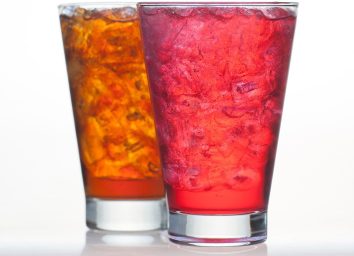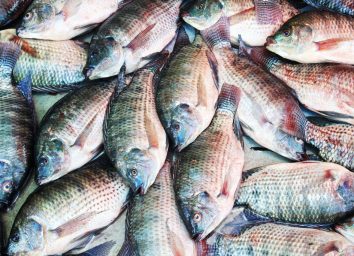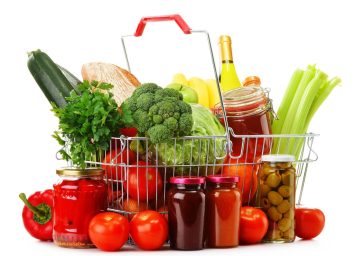6 No-Sacrifice Grocery Swaps for Weight Loss
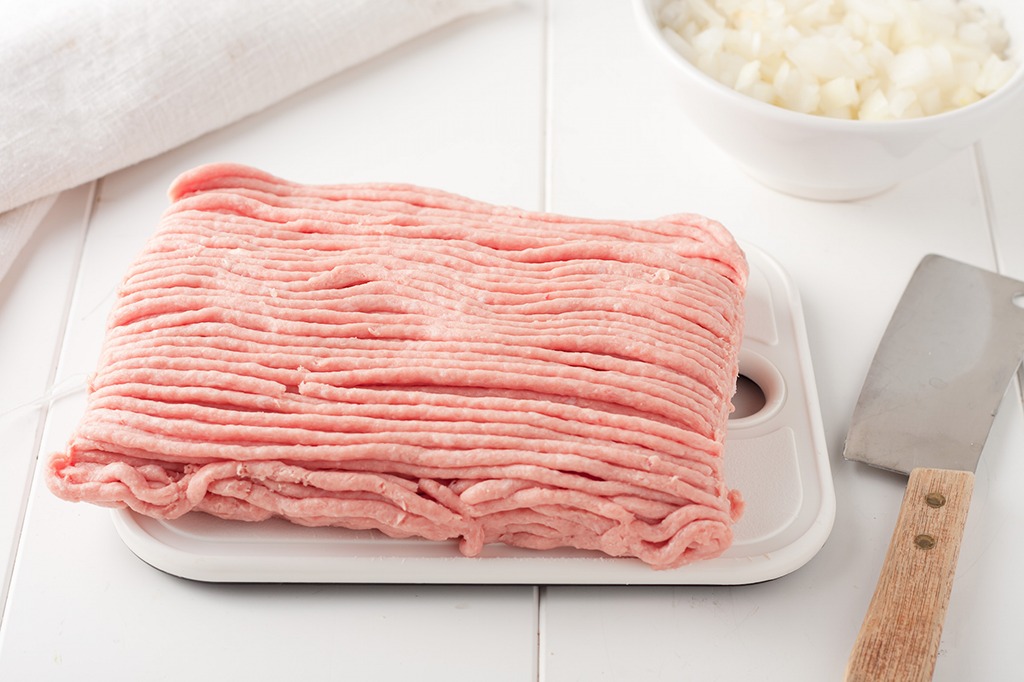
We've said it before: Eating lean isn't about deprivation, it's about choosing smart alternatives. The great news is that some of those alternatives are better tasting and more filling, in addition to being better for you. (And some seemingly superior foods, like skim milk, are in fact not so much.) When you're armed with these tips, you can make these everyday foods work for you when it comes to burning fat and gaining muscle.
Meats
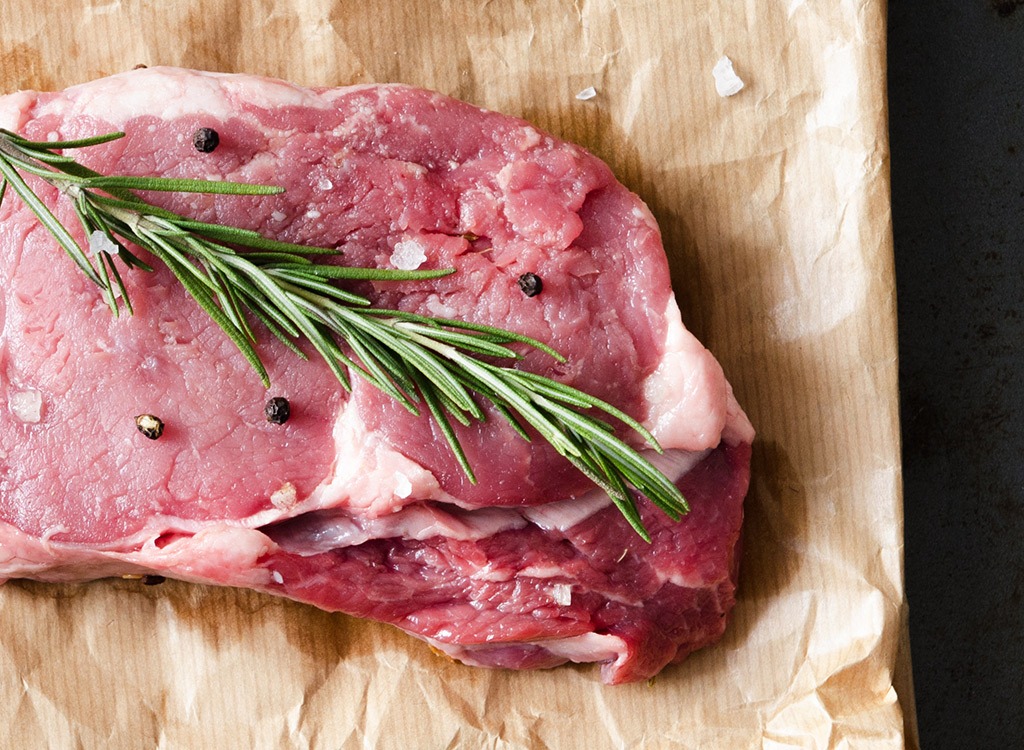
YES: Grass-fed beef or bison, organic chicken or turkey, pork tenderloin
NO: Grain-fed beef, deli-sliced chicken or turkey, cured ham
If "grass-fed" and "pasture-raised" just sound better, that's because they are. Opt for organic beef whenever you can, and choose whole lean cuts like top sirloin or flank steak (bison is lean all-around), organic chicken and pork tenderloin instead of ham. Avoid deli-sliced meats, the Frankenstein's monster of the food world: They're often formed from pieces and bound with additives, and can contain sodium nitrate and nitrite for color and preservation. (Sodium nitrites have been linked to cancer.)
Nuts & Seeds
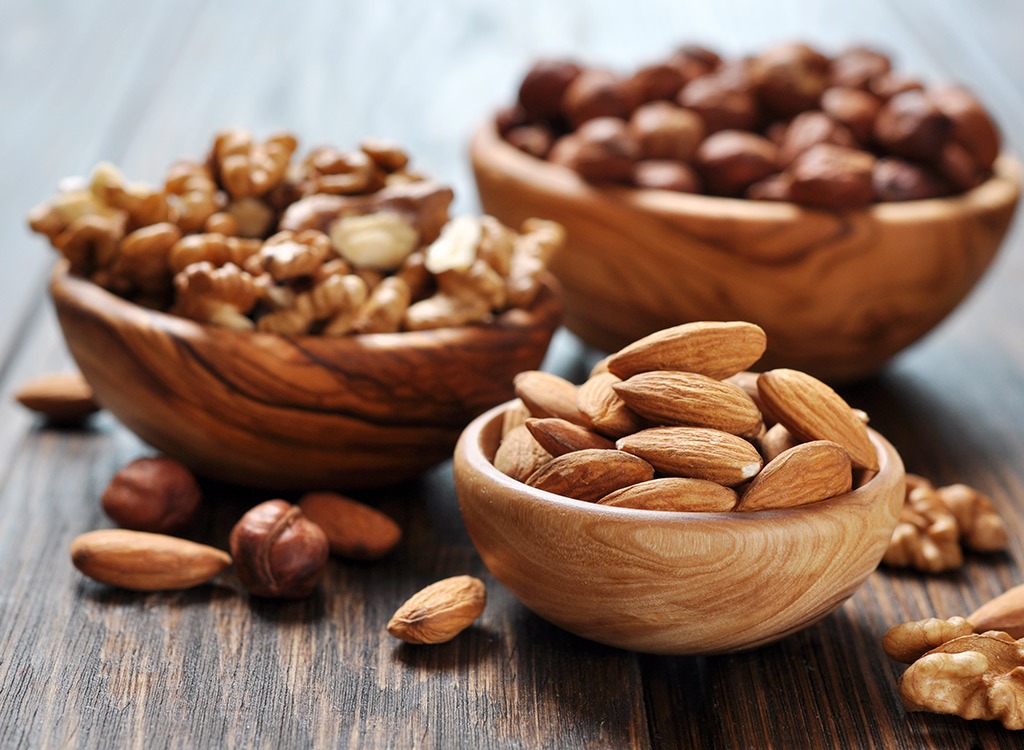
YES: Raw or dry- roasted nuts and seeds
NO: Roasted or salted nuts and seeds
Nuts have been taken off the nutritional blacklist, but it's only a conditional pardon. You should always choose the raw variety. Salted nuts are basically coated in sodium, and roasted nuts are tiny fat bombs: They're usually cooked in partially hydrogenated oil, or trans fats, which can blow your bad cholesterol levels sky-high.
Dairy
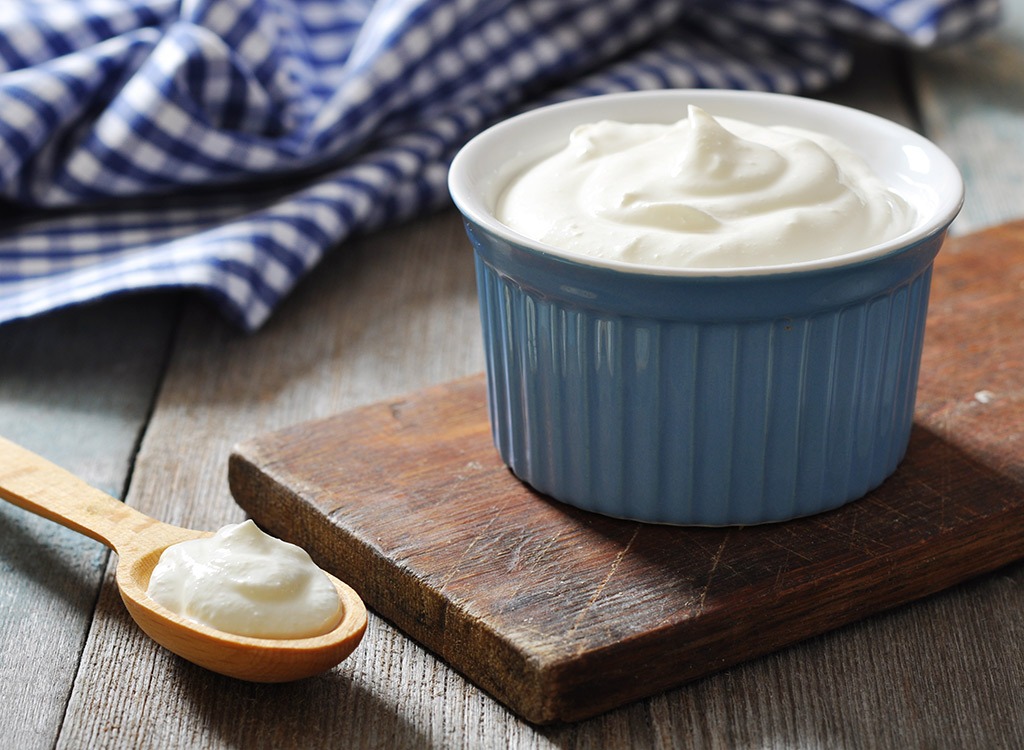
YES: Whole milk, full-fat Greek yogurt, block cheese
NO: Skim milk, low-fat fruit yogurt, low-fat shredded cheese
Skim milk, which once seemed like your dietary BFF, is actually a nutritional underminer. When dairy products—including yogurts and cheeses—are processed to remove fat, essential nutrients are skimmed away, too. Full-fat milk hasn't been processed aside from being pasteurized. When opting for yogurts with added fruit, choose wisely—some have way too much sugar. Check out our list of 9 Best Yogurts for Weight Loss.
Grains
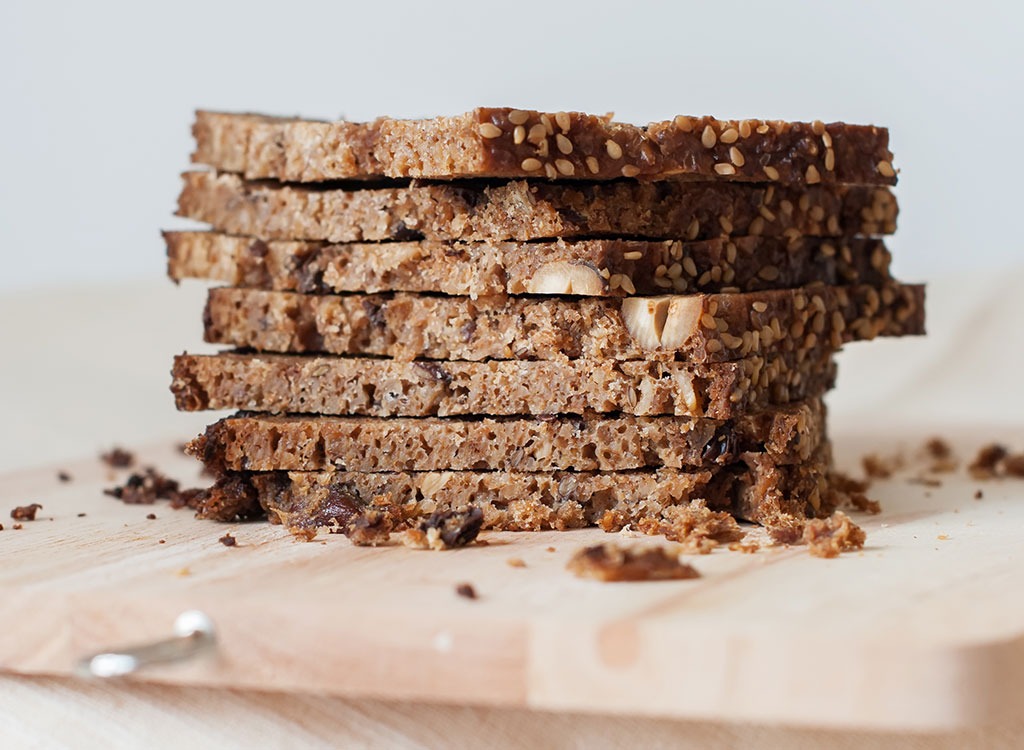
YES: Sprouted bread, steel-cut oatmeal, quinoa, freekeh
NO: Multi-and whole-grain breads, cereals, rice
Multigrain bread is another nutritional devil in disguise: Most multi- and whole-grain breads have added sugar or corn syrup. A better choice is sprouted breads, which are made from grains sprouted from the ground up, so you're essentially eating veggies. Steel-cut oatmeal is a heart-healthy superfood with no additives, but the boxed cereals you loved as a kid have no love for your grown-ass body. They're packed with fillers and sugars and are highly processed, which zaps nutrients.
Fish
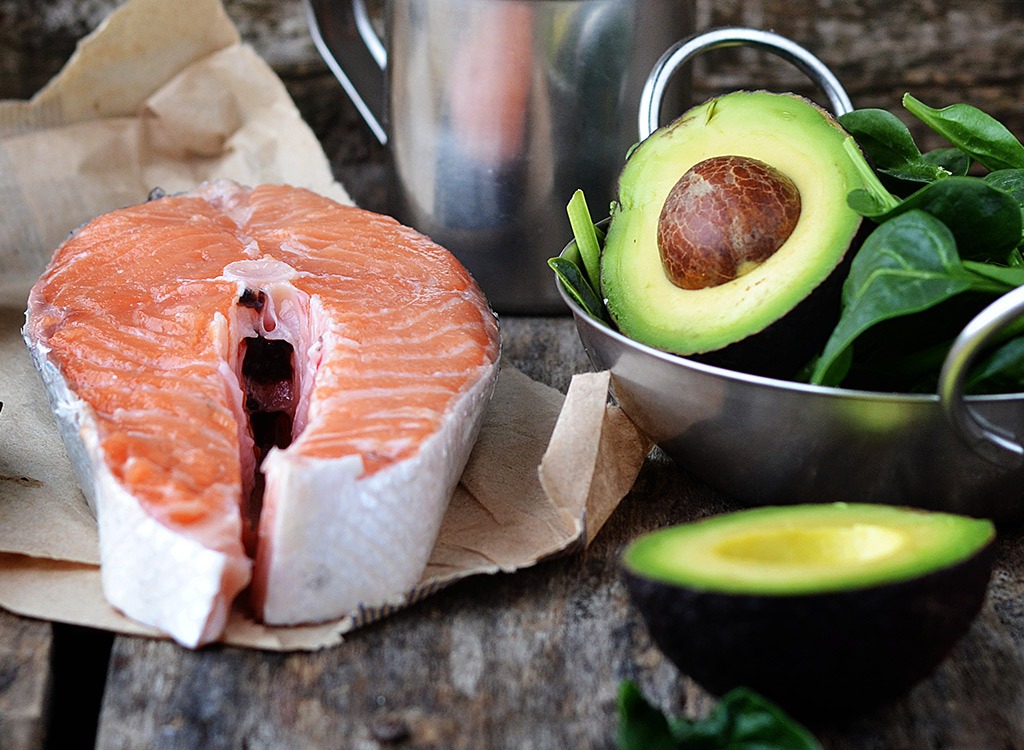
YES: Striped bass, catfish, Pacific halibut, wild Pacific salmon, canned light tuna (in water)
NO: Imported mahi-mahi or swordfish, farmed Atlantic salmon, tilapia, shark
Generally speaking, wild-caught fish are better for you than those that are farmed, but some come from foreign fish populations that are endangered. Check seafoodwatch.org for a comprehensive list of which seafood is likely to be contaminated and/or overfished, and throw those varieties back into the refrigerator case. What's so bad about tilapia? Find out in our exclusive report on How Tilapia Is Worse Than Bacon.
Sweeteners
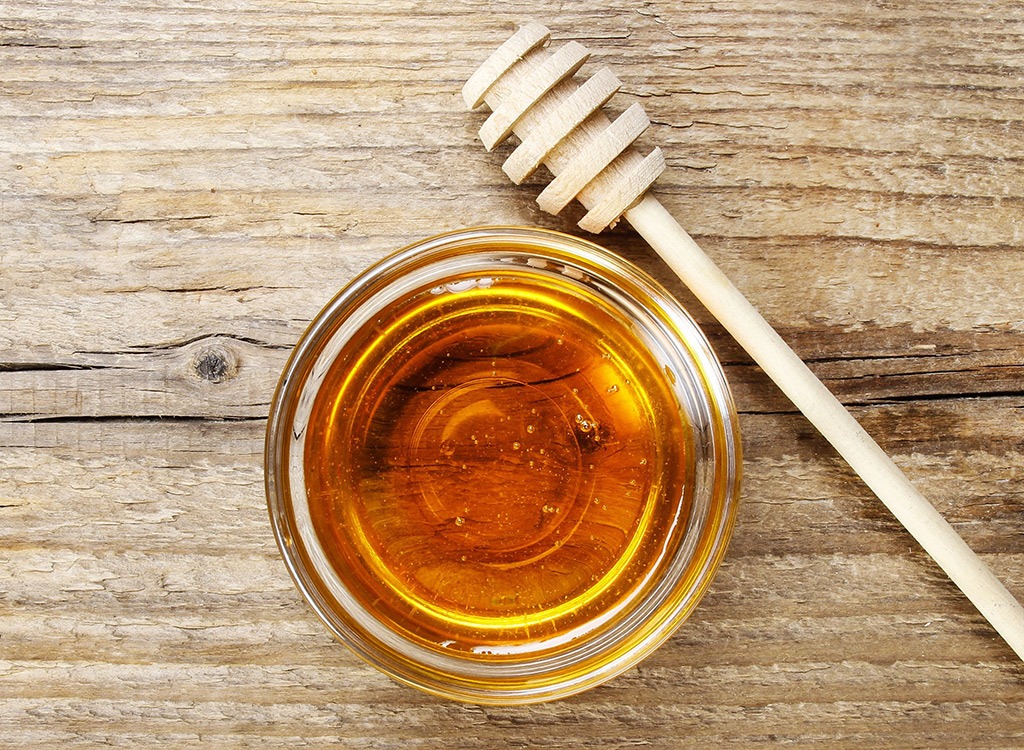
YES: Honey, pure maple syrup, molasses
NO: Refined white sugar, artificial sweeteners
You knew enough to avoid refined white sugar, but it's just as important to skip artificial sweeteners. Studies show that they can actually increase your appetite and lead to weight gain. Opt instead for pure honey, 100% natural maple syrup and blackstrap molasses. Just don't go crazy: Sugar is sugar to your body.
Now that you know the smart swaps to follow, adopt these habits of highly effective shoppers and you'll be well on your way to being a master of the modern-day market.
MAKE CASH KING
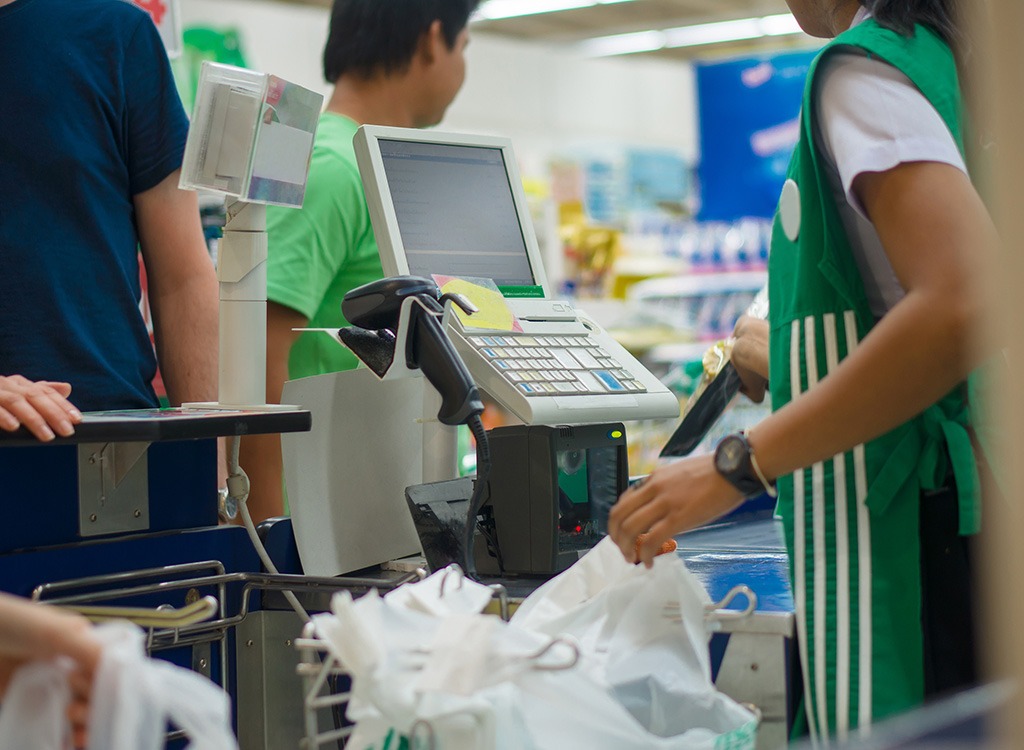
A 2010 study published in the Journal of Consumer Research tracked the grocery-shopping habits of 1,000 households over 6 months and found that shoppers who paid with cash bought fewer processed foods and more nutritious items than those who opted to use credit. The credit users not only bought more junk, they also spent an average of 59 to 78 percent more on their grocery bills. The explanation: Credit and debit cards are more abstract forms of payment, so you don't use them as carefully as you do cash.
SNACK BEFORE SPENDING
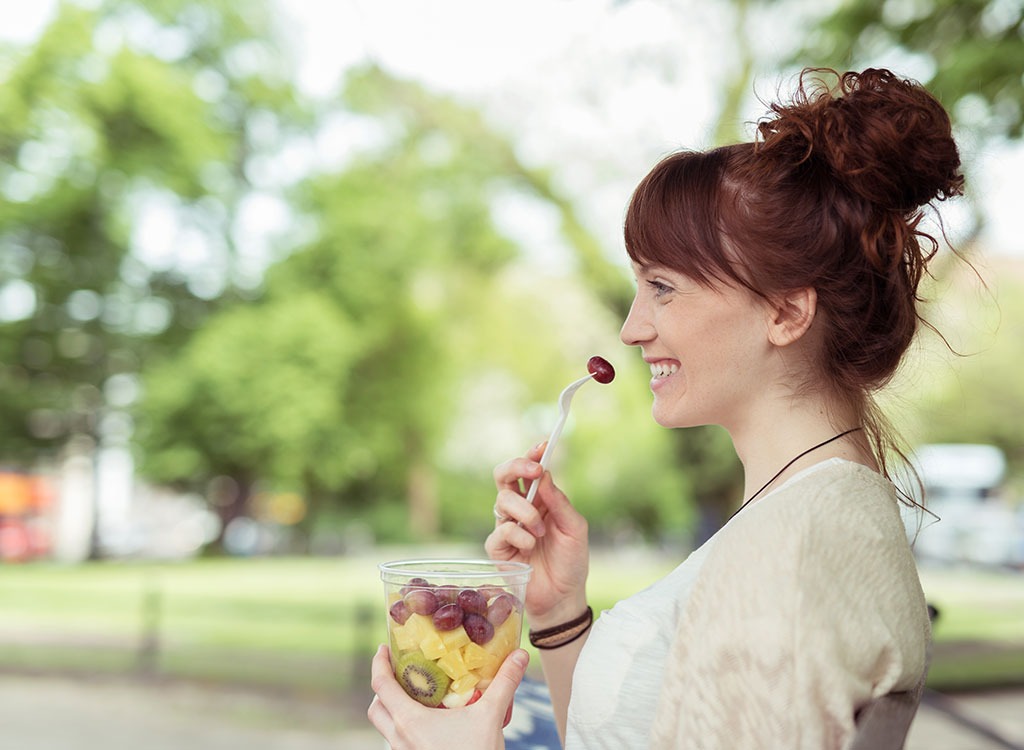
It's a no-brainer that an empty belly leads to increased food cravings, but hunger may also affect your decision-making skills more generally. In a 2010 study, researchers at University College London discovered that hungry participants made riskier gambling decisions than those who were satiated, leading the investigators to argue that the hormones your body releases when you're hungry influence your ability to think rationally. Plan your market trips to fall right after meals, or fortify yourself by eating a handful of fiber-rich nuts just before shopping, or go for one of these 50 Best Snacks in America!
ENABLE YOUR GROCERY GPS
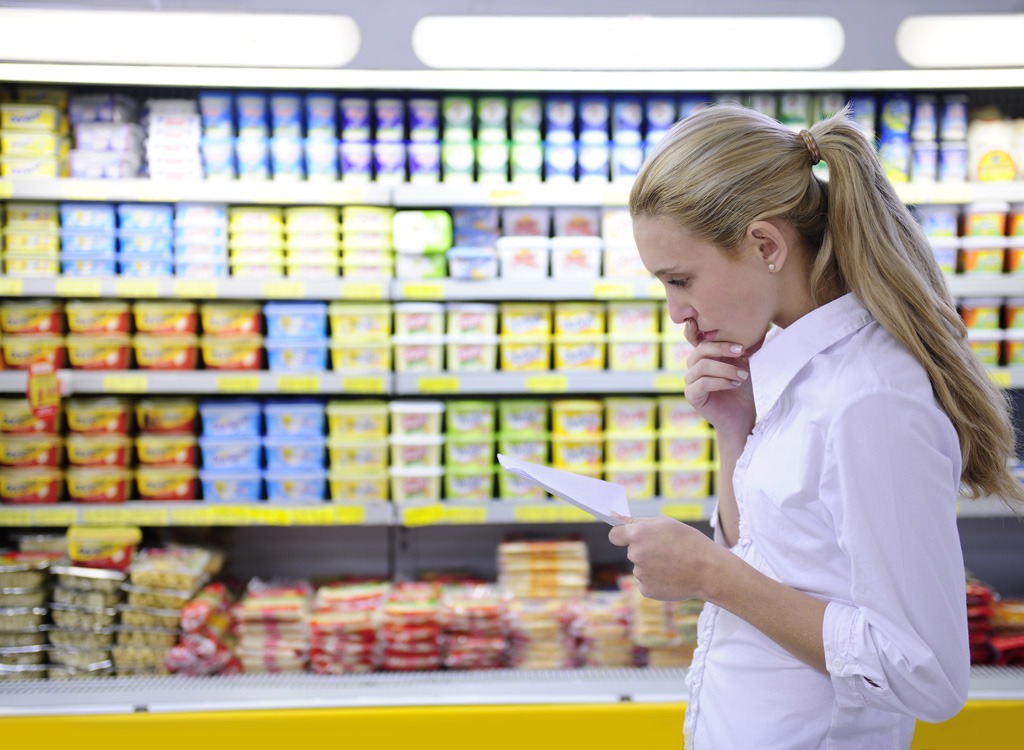
Before you get in your car to drive somewhere you've never been, what do you do? You write down directions. Okay, you probably tap the address into an iPhone or an onboard GPS, but the objective is the same: You're trying to make all the right turns that will lead you to your destination. Similarly, if your destination is a healthy body and an affordable grocery tab, you need directions. The supermarket is a highly complex thoroughfare, and every turn brings you closer to or further from the body you want. Creating a grocery list helps you stay focused on what you want to buy, leaving you less susceptible to marketing tactics and impulse purchases.
SHOP ON WEDNESDAYS
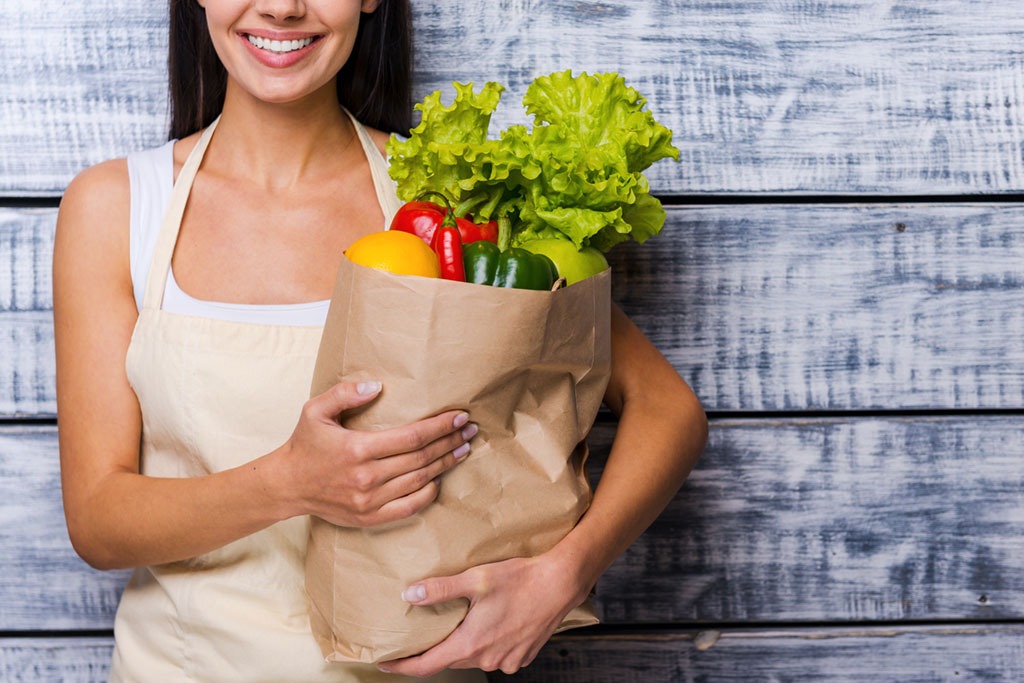
Most people leave their grocery shopping for Saturday or Sunday mornings, when the supermarket looks more like a ravaged battlefield than a center of commerce. Consider making midweek evening runs, instead. According to Progressive Grocer, only 11 percent of Americans shop on Wednesdays, and on any given day, only 4 percent shop after 9:00 p.m. So if you're shopping at, say, 9:00 p.m. on a Wednesday, you're able to get in and out quickly, which means you'll spend less time fighting impulse items in both the aisles and at the checkout line. As a bonus, you'll free up your Saturday morning for something more enjoyable, like cooking a healthy breakfast.
TAKE YOUR CART FOR A STROLL
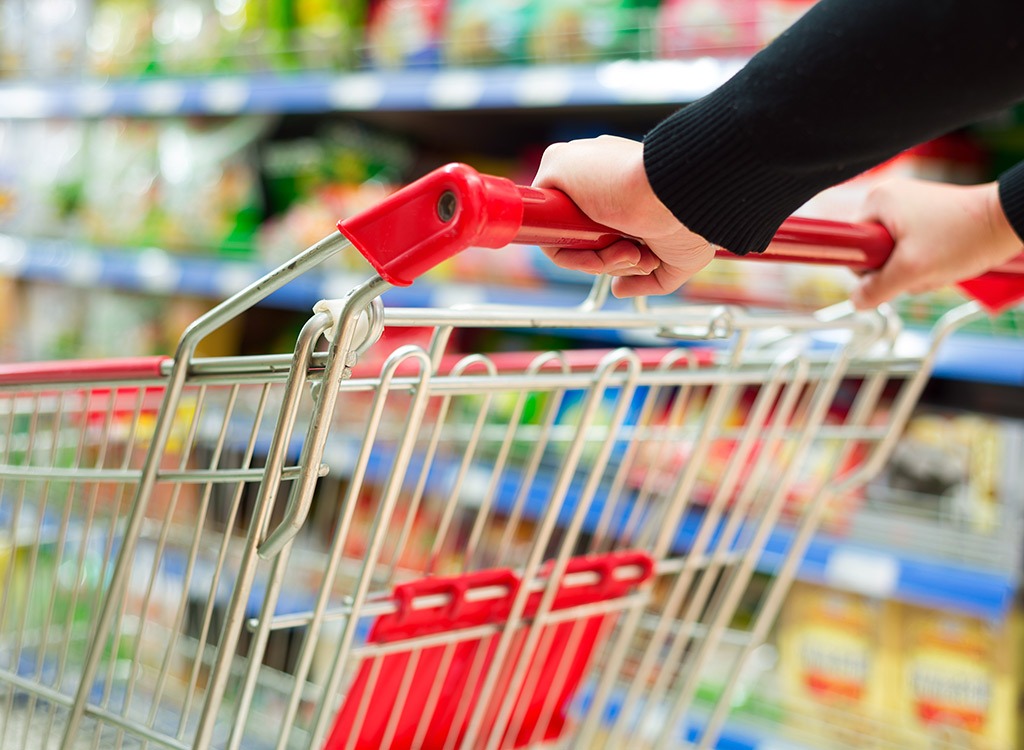
Pushing a shopping cart instead of carrying a basket may help you make smarter supermarket choices. A study published in the Journal of Marketing Research found that, all other things being equal, the strain of carrying a basket made shoppers more likely to reach for quick-grab impulse items—like the crackers and chips concentrated at eye level in the aisle. If you're lugging around a heavy basket, you're not taking the time to read labels and reach for more nutritious foods.
BRING YOUR READING GLASSES
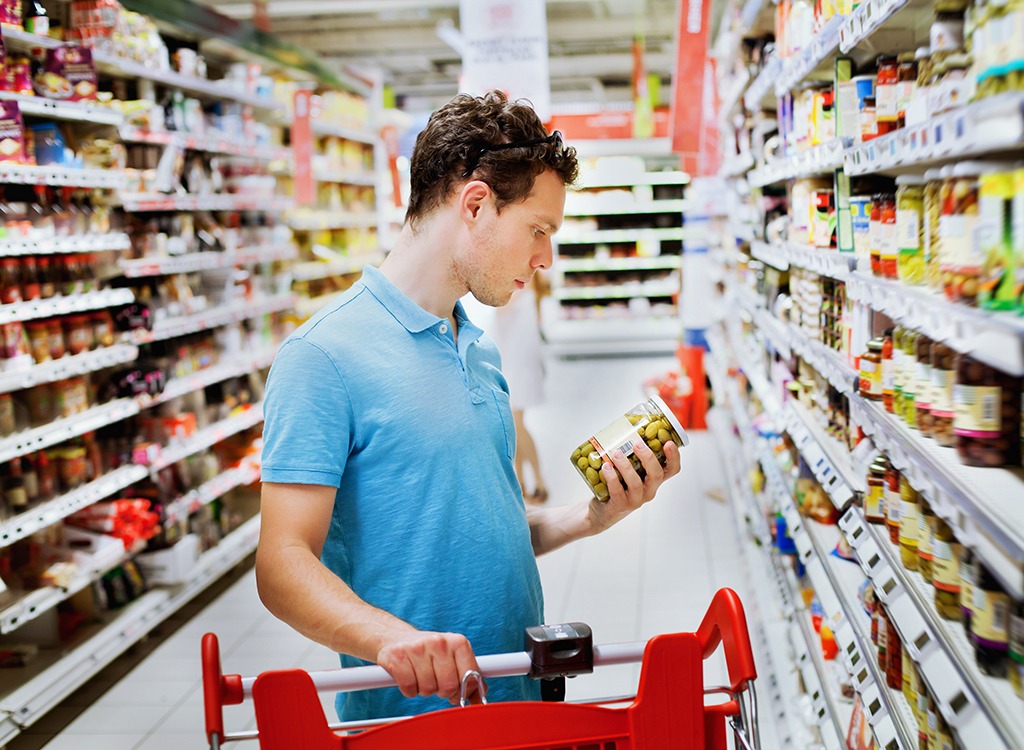
With the exception of alcohol, every packaged food and beverage in the supermarket has an ingredients statement. By law, the more of an ingredient a product contains according to weight, the higher it appears on that list, so effective shoppers learn to ignore front-of-label claims and read ingredients statements instead. Claims like "made with whole grain" and "reduced fat" can fool you into thinking you're making healthy choices, but if your "reduced fat" food lists sugar as the first—or second or third—ingredient, then it's not doing you any favors. A good general rule for label scanning: The fewer the ingredients, and the easier those ingredients are to pronounce, the better.
LIVE ON THE EDGE
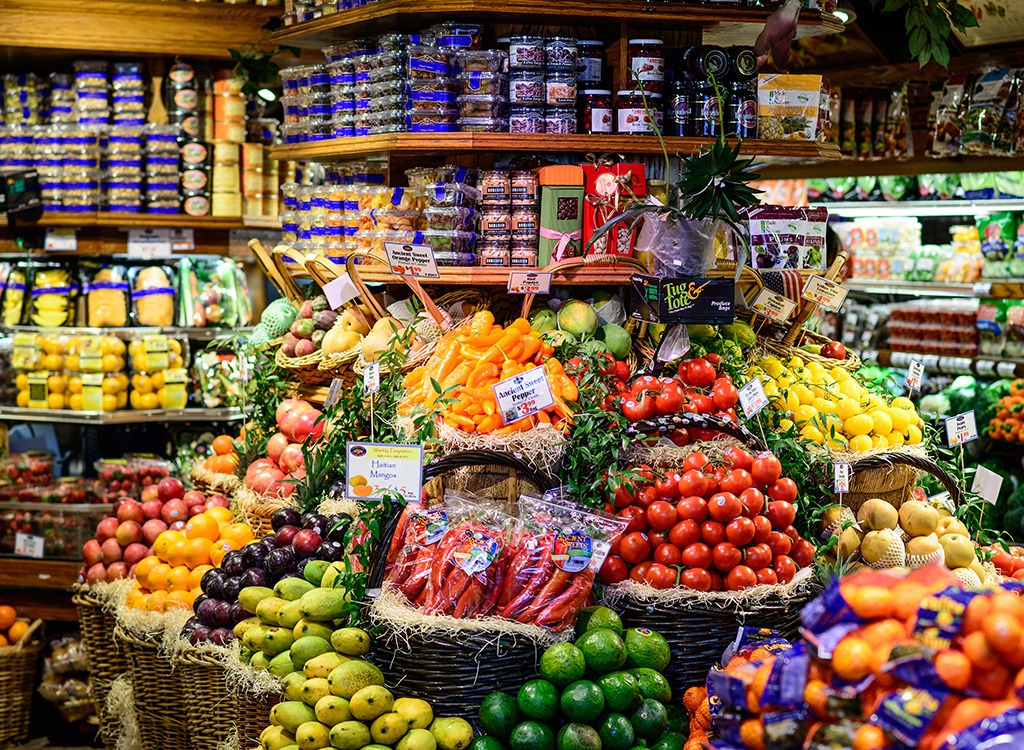
For practical and economic reasons, most supermarkets in America live by the same organizational principles. Long-lasting boxed and bagged foods end up in the center aisles, while perishable, single- ingredient foods like fruits, vegetables, lean meats, and dairy live along the outer walls. And that's where you should live, too. Every time you enter the supermarket, make a full lap around the outer wall before making strategic inner-aisle strikes for things like oatmeal and whole-grain crackers. The more time you spend working the perimeter, the healthier you'll be.
THE TRUTH ABOUT HEALTHY FOOD STORES
THEY DRIVE YOUR SENSES SENSELESS
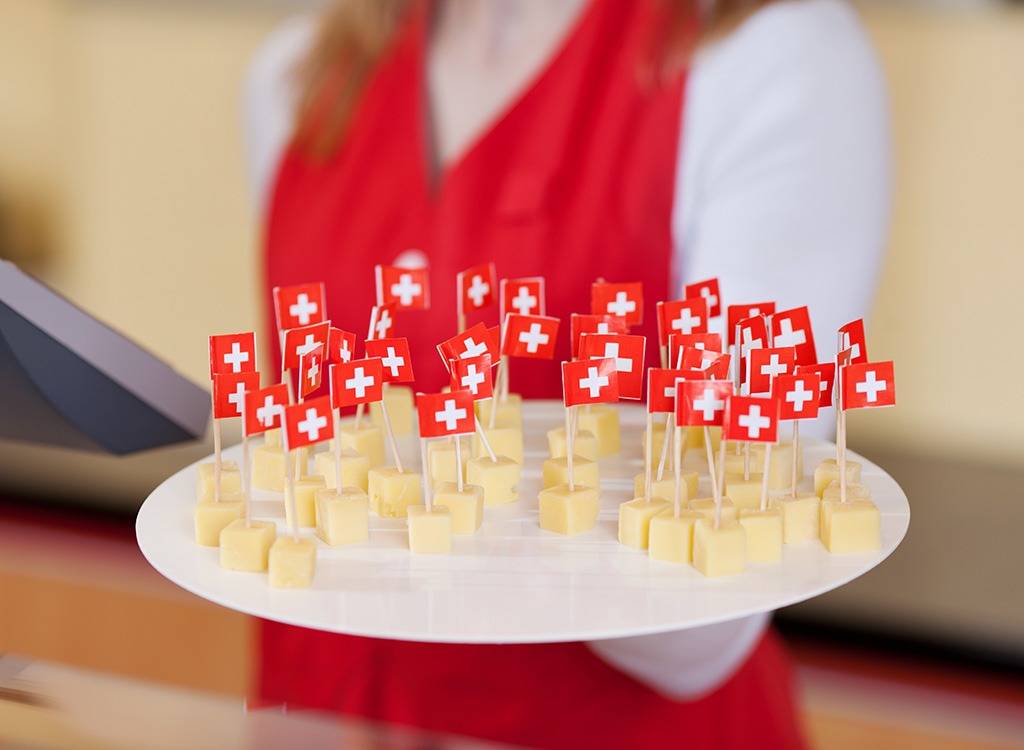
Those delicious in-store product samples that you find in every specialty supermarket? They not only whet your appetite for the product, but also encourage you to buy more food overall, according to a study from Arizona State University. In fact, the research indicates that even the smell of cooking food might contribute to this effect. The stores are well aware of this. In fact, the Fresh Market invites you to "help yourself to a sample of freshly brewed coffee" and brags that "fragrant smells fill the atmosphere."
THEY DRIVE CALORIE COUNTS UNDERGROUND
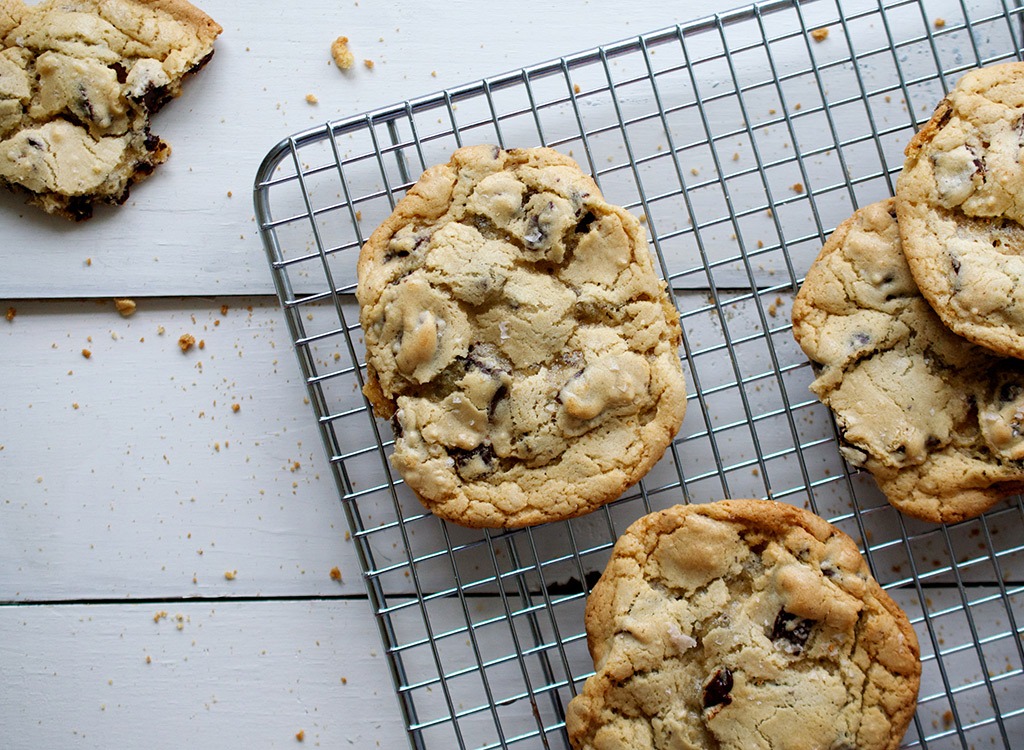
When you buy a package of cookies the complete nutrition information is listed. But when you buy cookies made at an in-store bakery, you won't find calorie counts. That goes for all the bakery items, from the "gourmet muffins" at the Fresh Market, to the "bakery fresh chocolate chip cookies" at Trader Joe's, to the "gluten-free vanilla cupcakes" at Whole Foods. For perspective, just one of those Whole Foods cupcakes packs 480 calories. (The calorie count is listed online, but not in the store.) Knowing those numbers is critical: University of Mississippi researchers found that unhappy people —who are more likely to overindulge in comfort foods—ate 69 percent fewer calories when they checked the calorie content before digging in.
THEY MAKE THE JUNK LOOK GOURMET

Ever notice that more-expensive products tend to come in fancier packages? Researchers at the University of Michigan recently found that food purveyors may actually use fancy fonts and labels to help justify higher prices. The scientists theorize that attractive fonts and labels give people the perception that they are getting more value for the higher cost. Think about it: Would you like a piece of cake—or a piece of cake?
THEY BASK IN THE HEALTH HALO
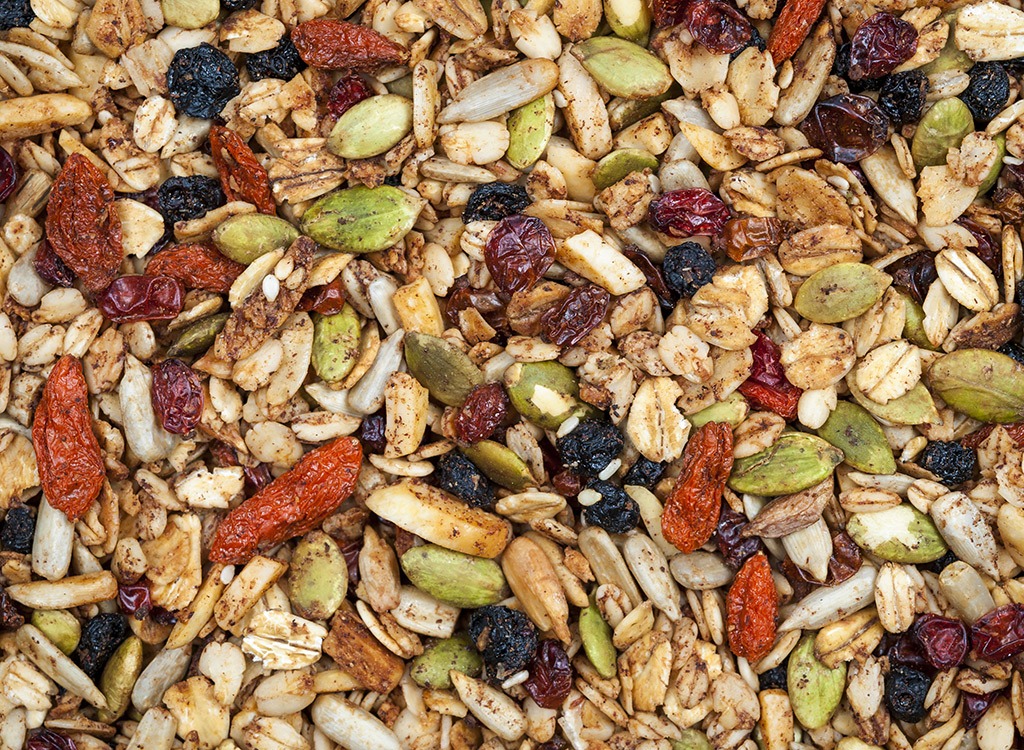
Do you consider products from specialty supermarkets to be healthier than those from other grocery stores? If the answer is yes, you could be doing your waistline a disservice. When people guess the number of calories in a sandwich coming from a "healthy" restaurant, they estimate that it has, on average, 35 percent fewer calories than they do when it comes from an "unhealthy" restaurant, according to a study in the Journal of Consumer Research. Remember that the next time you reach for that package of Whole Foods' Organic Fruit & Nut Granola. One cup of this "healthy" product contains almost 500 calories.
THEY BULK YOU UP "IN BULK"
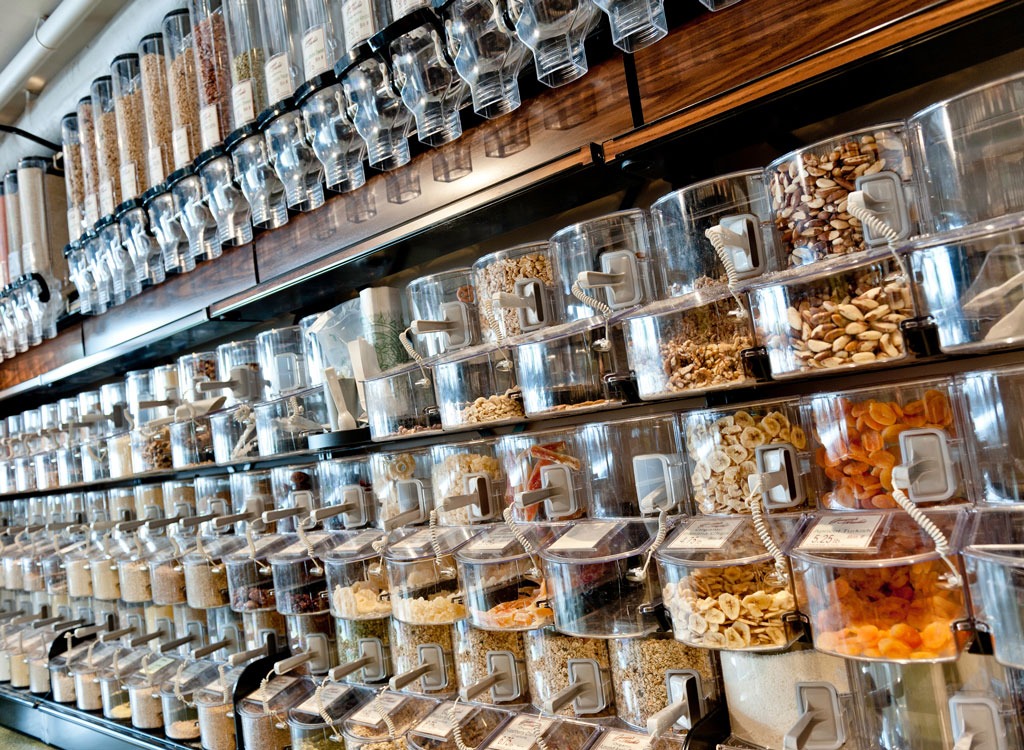
On the Fresh Market Website, the store claims to have the largest bulk snack selection "in town." But be careful what you buy in this bulk section: It may cause you to look like you fit in there. Why? By filling your own bag with a big scoop, you'll likely underestimate how much you've served yourself. Case in point: A Cornell University study found that nutritionists who were asked to serve themselves ice cream with large bowls and spoons dished out about 57 percent more than those given smaller bowls and spoons. Buy basic staples like spices, grains, and legumes in bulk, but make sure your snacks always come with serving sizes and calorie counts.
TIPS FOR WALKING THE AISLES
STAY AWAY FROM THE BUFFETS
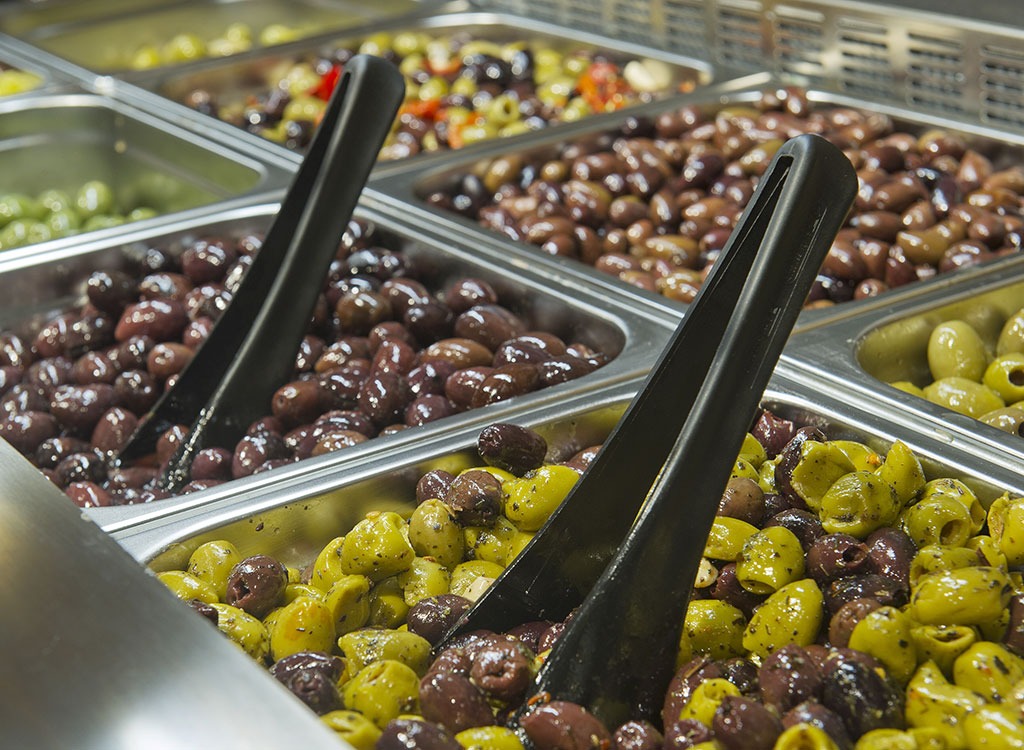
If you're watching your weight, don't step near the Whole Foods buffet. Cornell University researchers found heavier diners tend to overindulge in buffet settings. (Surprise!) Our real beef: While Whole Foods lists selections' ingredients on the buffet's ID labels, it doesn't provide nutrition information for any of them. And yes, one of the items is macaroni and cheese—or "pasta and cheese" as the chain calls it.
PREPARE YOURSELF FOR STEEP PRICES
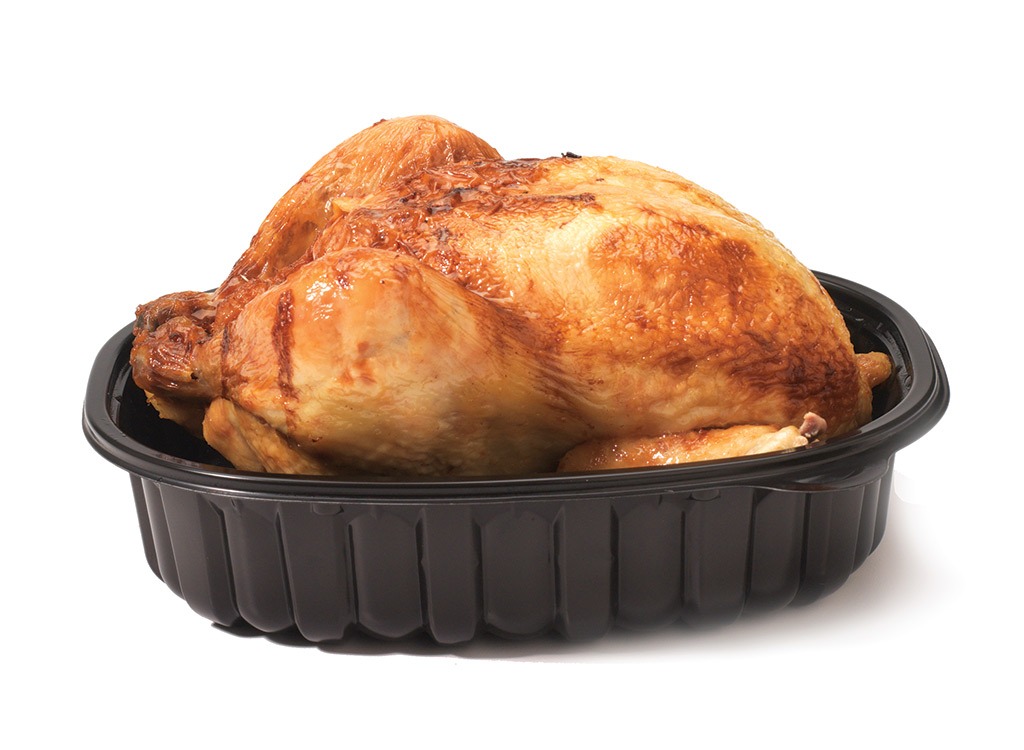
The prepared-foods section of grocery stores has grown in recent years as consumers demand more quick, low-cost alternatives to restaurant meals. A 2010 survey found that 64 percent of people had purchased a ready-to-eat meal from a supermarket in the previous month, and experts estimated that the sector would grow to $14 billion by the end of 2011. Unfortunately, markups can be steep and nutrition is scarcely a concern for supermarkets looking to maximize profits. Your best bet on a busy night? A rotisserie chicken—healthy, versatile, and usually about $6 a bird.
AVOID THE VEGAS EFFECT
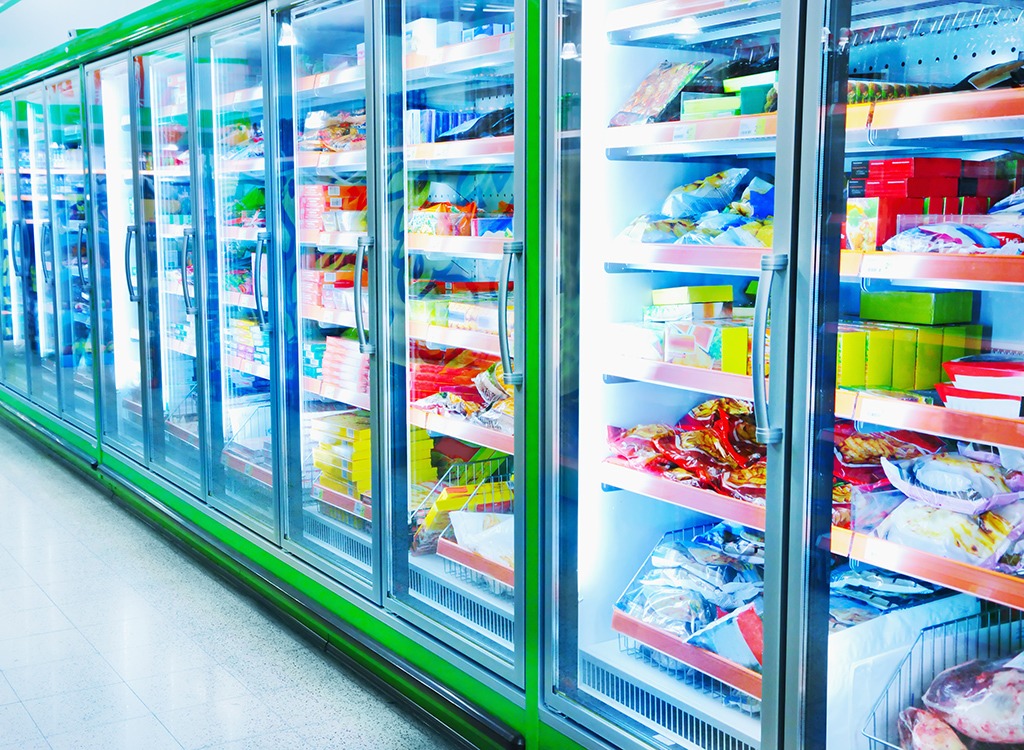
Supermarkets are designed like casinos: clockless and nearly windowless expanses flooded with artificial light and Muzak, places where time stands still. Casinos force guests to navigate a maze of alluring gambling opportunities before they reach essential destinations: restaurants, bathrooms, exit doors. Same goes for the supermarket: The most essential staple foods— produce, bread, milk, and eggs—are placed in the back and along the perimeter of the supermarket to ensure that customers travel the length of the store—and thus are exposed to multiple junk-food temptations along the way.
SKIMP ON THE SNACKS
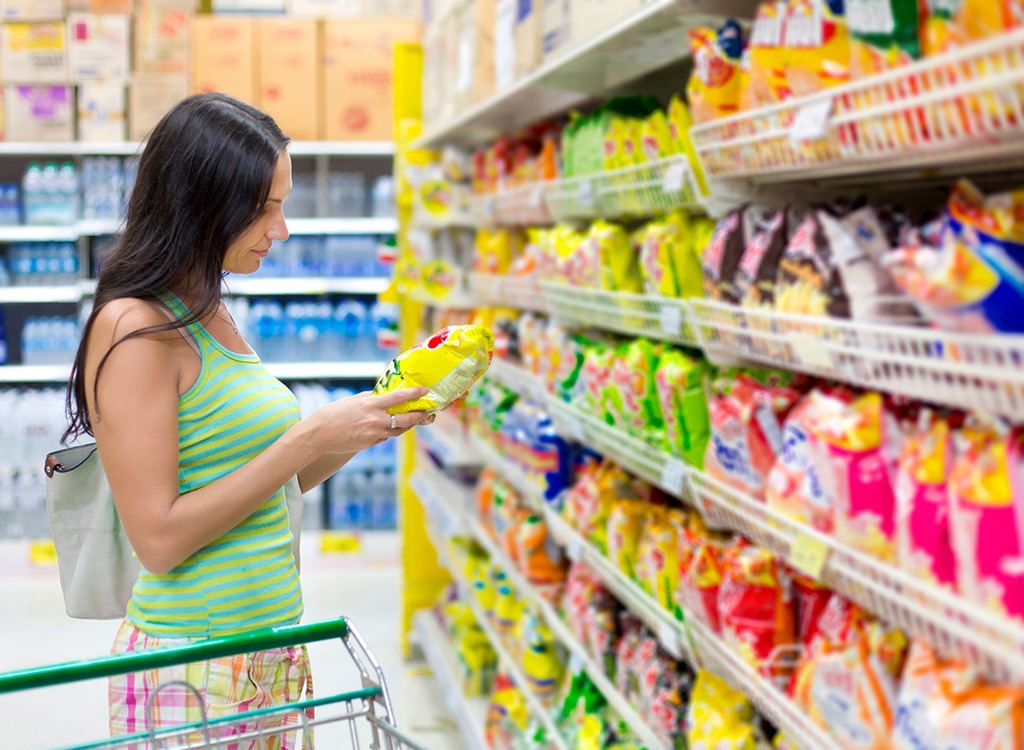
The densest collection of those temptations is found in the snack aisle, which on average packs in a waist-widening 446 calories per 100 grams of food. Cereals come in a close second, costing you 344 calories per 100 grams.
CHECK YOURSELF OUT
Impulse purchases drop by 32.1 percent for women—and 16.7 percent for men—when they use the self-checkout aisle, according to a study by IHL Consulting Group. Eighty percent of candy and 61 percent of salty-snack purchases are impulse buys.
LOOK BEYOND WHAT THE FOOD INDUSTRY WANTS YOU TO SEE
The top eight grocery chains now account for 50 percent of all supermarket sales, and with this increased clout, they're demanding that manufacturers pay higher and higher slotting fees for premium shelf space. By some estimates, manufacturers shell out $100 billion a year in shelf fees, representing more than half of the supermarket industry's profits.
SHOP FOR CEREAL ALONE
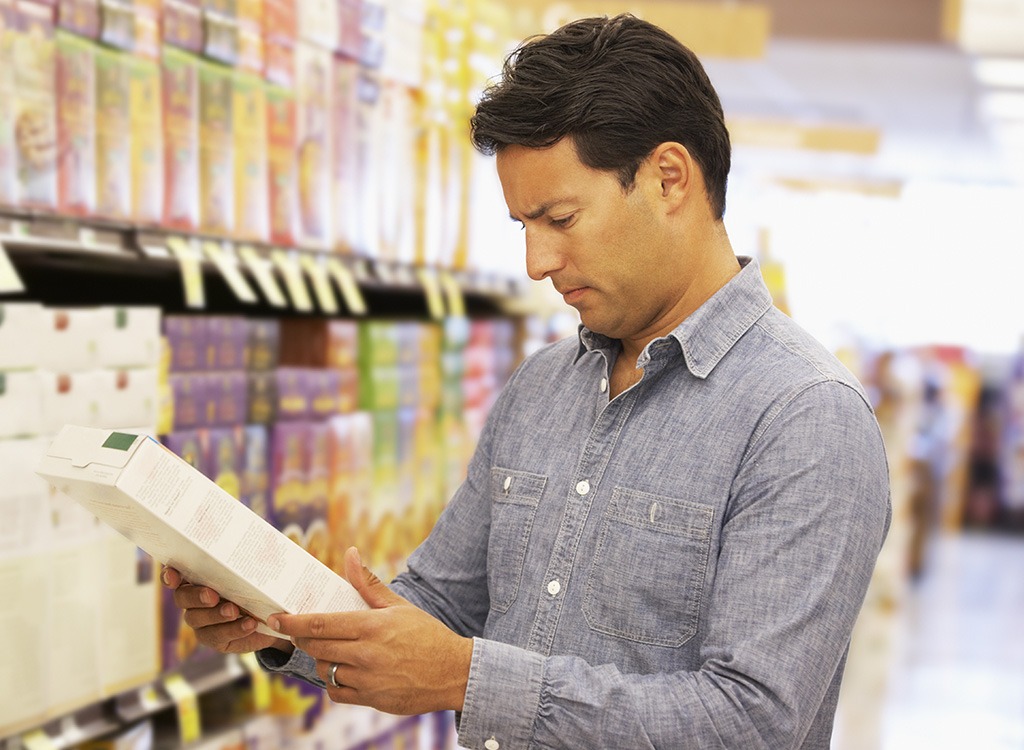
The cereal industry spends more money each year— $229 million—advertising to children than any other packaged food category, according to the Federal Trade Commission. That also means they can afford to place sweet cereals on the lower shelves to catch the eyes of sugar-starved kids, who can then pester their parents for that colorful box of refined carbs.
SCAN FOR UNKNOWN BRANDS
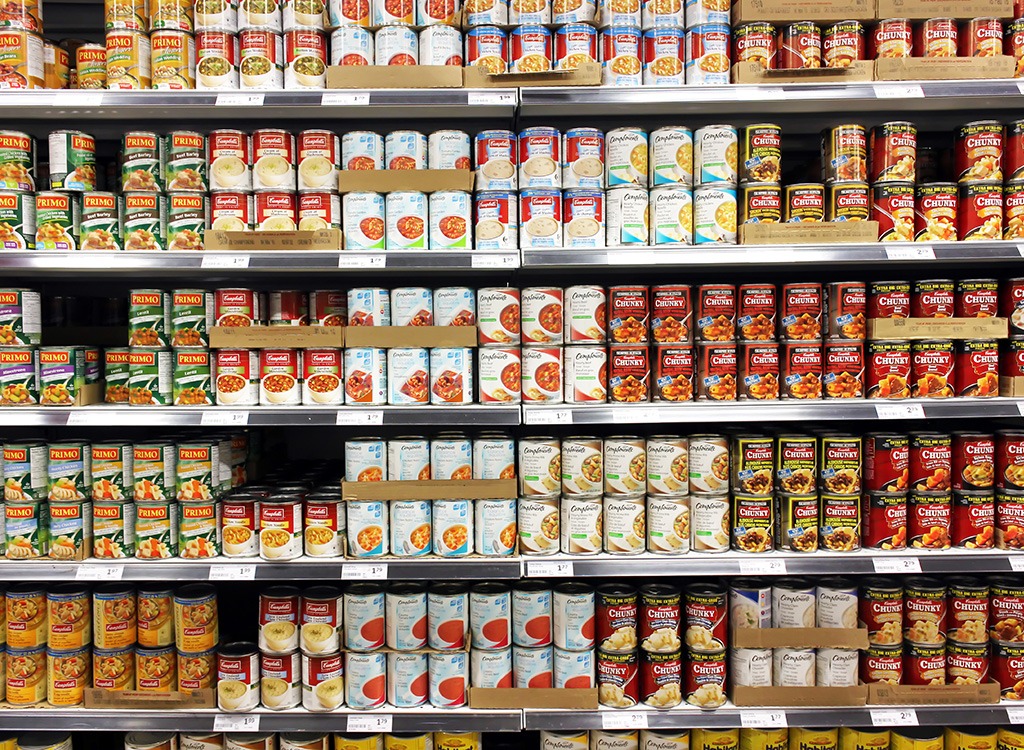
As with the music and movies, sometimes the best stuff is the most obscure. Not only can bigger manufacturers afford better real estate, but they often pay to keep smaller manufacturers off the shelf or in disadvantageous locations. In California, independent bakers filed a lawsuit accusing Sara Lee of paying supermarkets to relegate local bagelmakers to only the top and bottom shelves. Sadly, these lesser-known brands are often healthier and more affordable than their big-name counterparts.
LOOK HIGH, AND LOW

For a new product, the standard price of admission can run to up to $25,000 per item for a regional cluster of stores. Some have estimated the cost of rolling out a small product line in supermarkets nationwide at $16.8 million. At those prices, only the biggest manufacturers—the Krafts and General Millses and Frito-Lays of the food world—can pay to play, further solidifying their places as brand leaders. Always start by scanning the top and bottom shelves. If you do, we guarantee that you'll find crackers with more fiber, fruit snacks with less sugar, and canned goods with less sodium than those on the costly middle shelves.
GO GENERIC
Take longer looks at private label (store brand) canned and packaged goods when possible. In many cases, they're made by the same manufacturers, using the same ingredients, as your major-label brands. They almost always taste just as good, provide comparable nutritional content, and come at a fraction of the cost.
SUBTRACT ADDITIVES
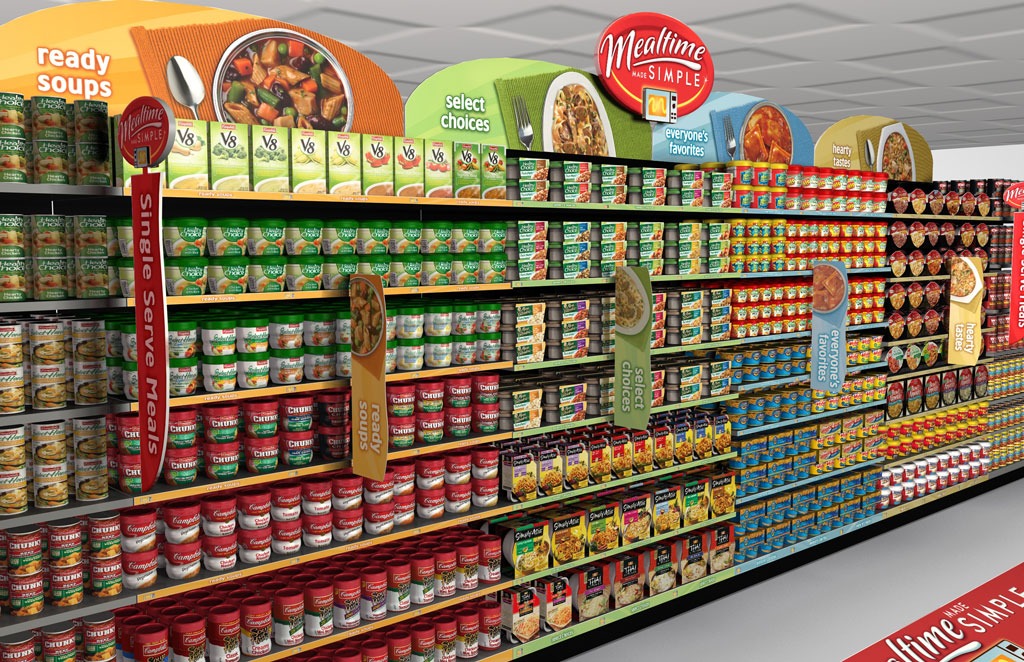
Canned foods are wallet friendly and easy to cook with, but watch out for a couple of common belt-busting pitfalls: high sodium content and unhealthy packing materials like oil and syrup. When buying cans, look for low-sodium options and canned meats packed in water, not oil.
AVOID QUICKIES
A study supported by the Marketing Science Institute found that shoppers who made "quick trips" to the store purchased an average of 54 percent more merchandise than they had planned to. Instead, be thoughtful in your planning—keep a magnetic notepad on your fridge and make notes throughout the week about what you need. (Avoiding extra trips will cut down on your gasoline costs as well.)
BULK UP
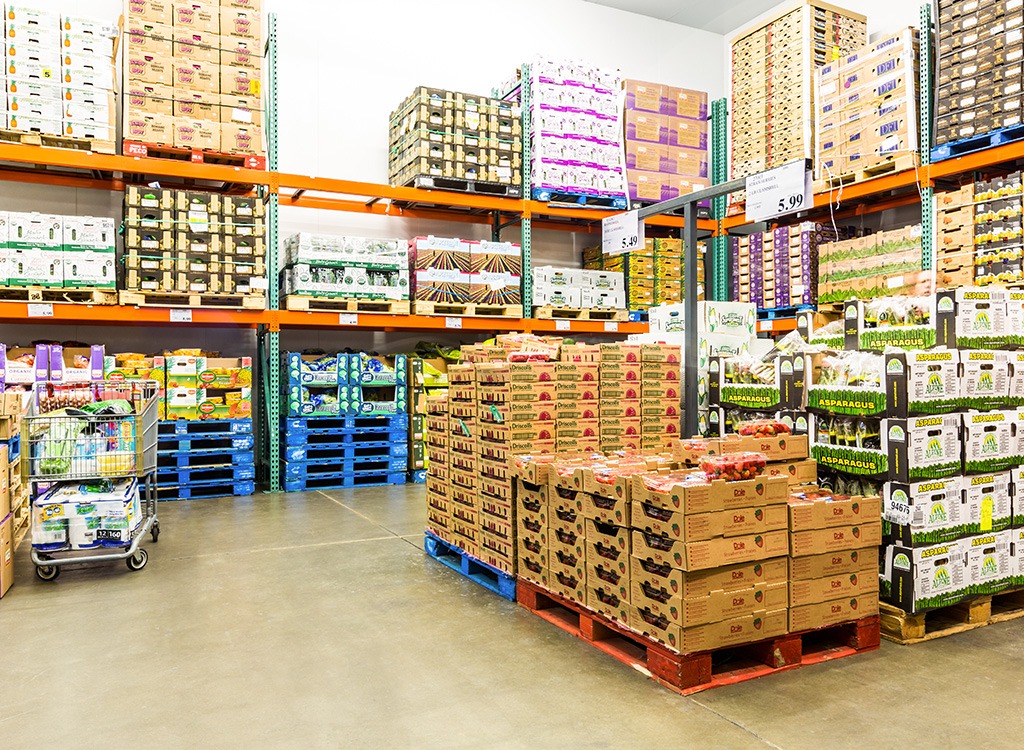
Discount clubs are great cost-saving alternatives, even if you have to pay a fee to join. It doesn't make sense to buy everything in bulk, of course—nobody needs a 2-gallon drum of capers. Focus on items you use a lot of and that won't spoil, like paper products and frozen foods. Some shopping clubs also offer discounted gas. Cha-ching!
WATCH YOUR WEIGHT
Okay, so one box of crackers costs $4 and the other $4.50. But before you assume the $4 one is cheaper, take a closer look at the net weight. You'll often find that the more expensive box contains more food—and therefore is really cheaper. Checking the net weight is also a great way of making sure you're not paying for a lot of packaging, only to get home and discover that most of what's inside the box is air.
STAY LOCAL
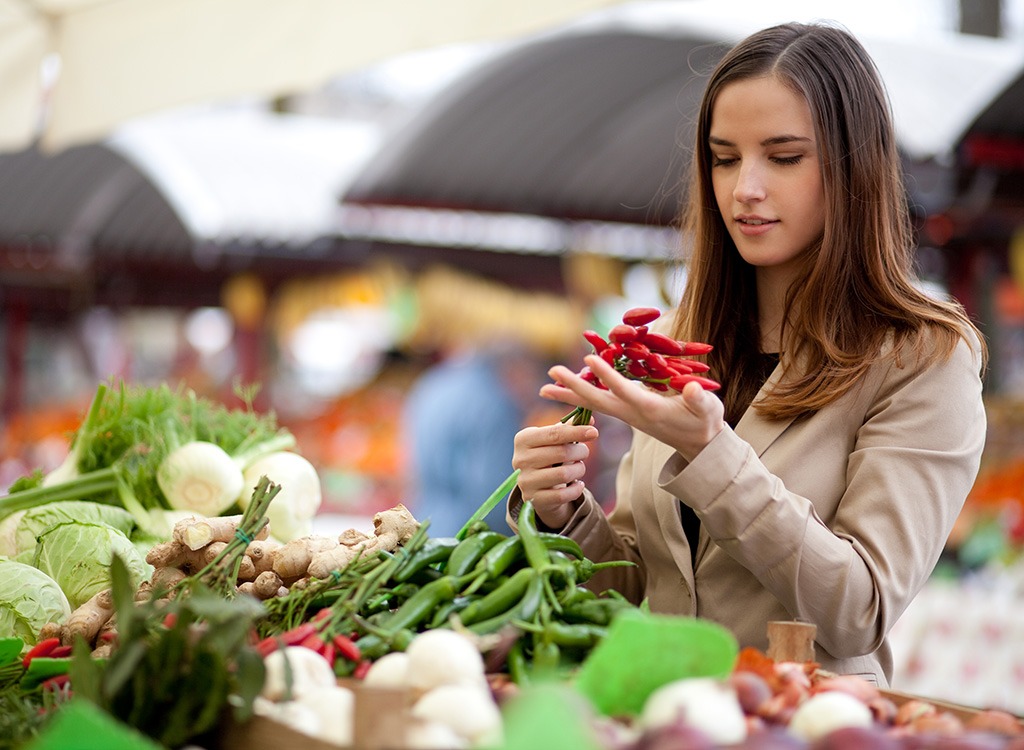
A 2004 Tulane University study found that having easy access to supermarket shopping was associated with increased household use of fruits (84 grams per adult equivalent per day). Map out the supermarkets both close to home and close to work, and while you're at it, look up the farmer's markets in the area at localharvest.org, an online database containing nearly every outdoor market nationwide.
EAT BEFORE YOU SHOP

This is critical! A 2008 study published in the Journal of Consumer Research found that consumers, even when on a tight budget, are more likely to spend more if their appetites are stimulated before making a purchase. The study tested the reactions of women shoppers to a hidden chocolate chip cookie–scented candle in the room. Nearly 70 percent who got a whiff of the cookie scent said they would buy a new sweater even though they were on a tight budget, compared with only 17 percent of those who weren't exposed to the cookie smell. You just know the guys who run the bake shop at the supermarket have read this study too!
STOP THE RETAIL THERAPY

Sadness increases the amount of money that shoppers are willing to spend, according to a 2008 study in the journal Psychological Science. Study participants who watched a sad video clip were willing to pay four times as much for a product than those who watched a neutral clip about nature were.
HOW TO MASTER THE PRODUCE AISLE
LINGER LONGER
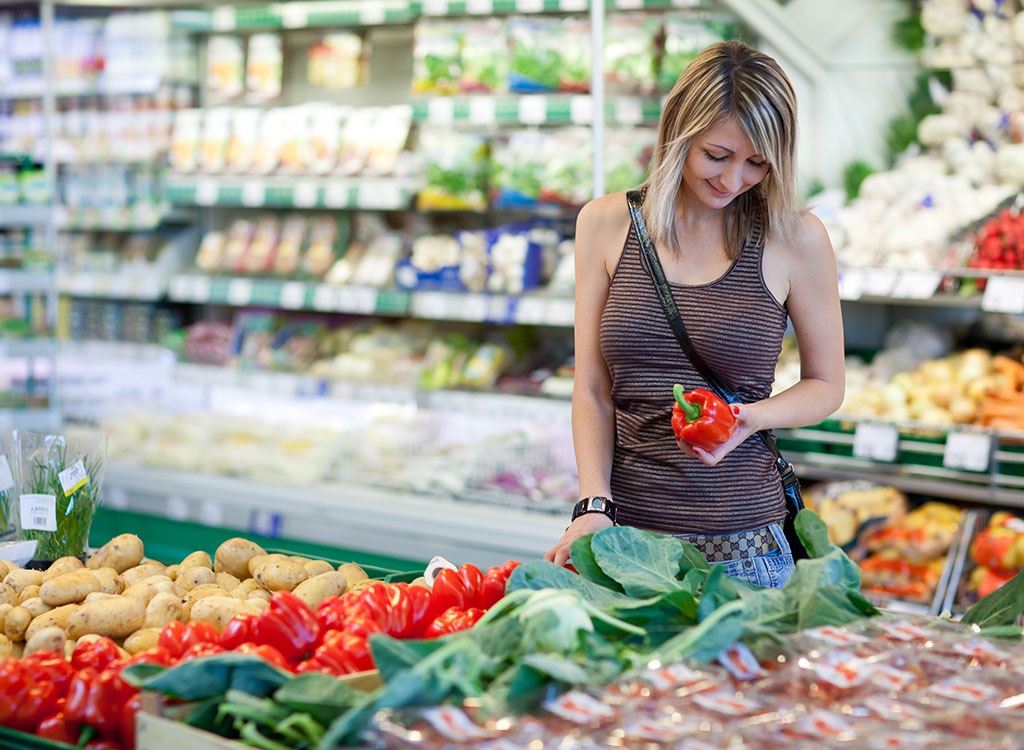
The produce section accounts for only 10 percent of a supermarket's sales, whereas the nutrient-depleted middle aisles make up 26 percent of sales. The most successful (i.e., healthiest) shoppers invert that ratio, spending the lion's share of their dollars in the produce and refrigerator sections and a small percentage in the murky middle aisles. Check out our Eat This, Not That! Guide to Saving Money on Produce!
BUY YOUR LETTUCE LAST
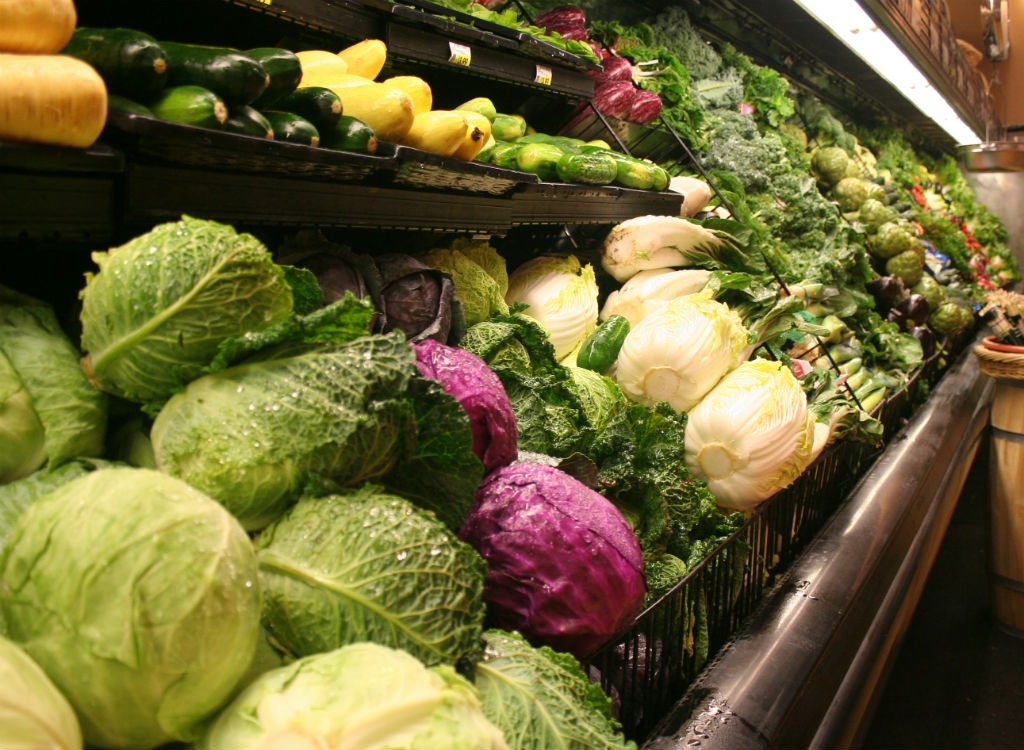
Consumers tend to shop in a counterclockwise pattern, according to a study from the Wharton School, so grocers place the produce section at the front of the store. Why? Because research shows that shoppers who peruse the produce aisle first spend more time and money in the store.
GET TO KNOW THE BIG O
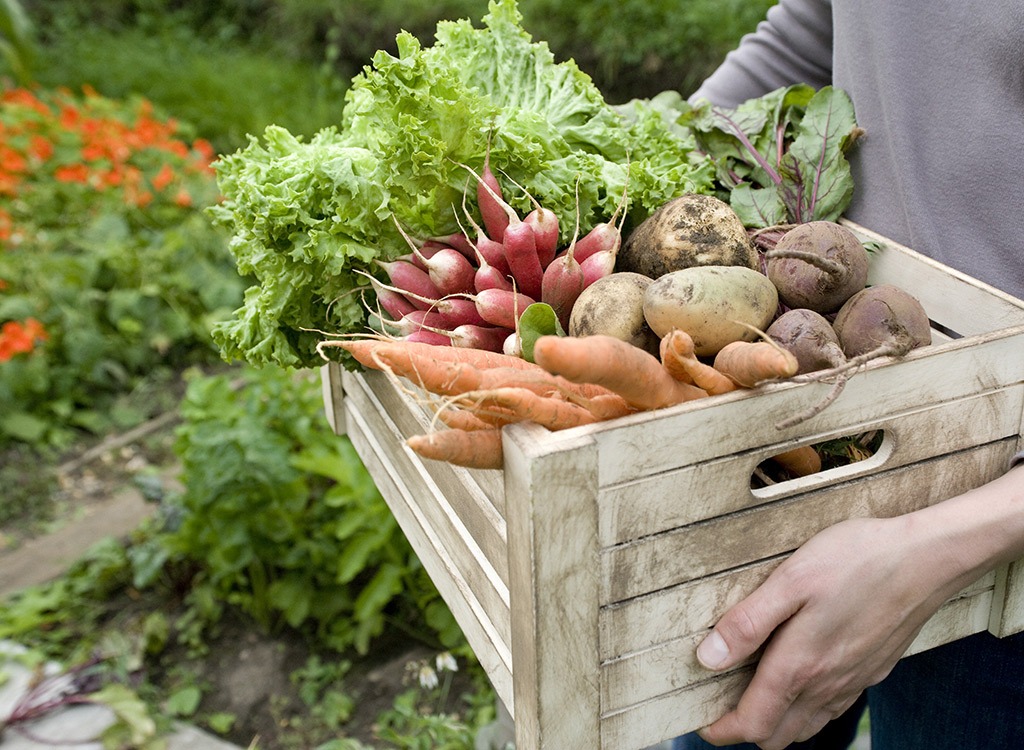
Organic foods and beverages have been one of the fastest-expanding sectors of the supermarket, with sales growing from $1 billion in 1990 to $26.7 billion in 2010. Organic foods can cost between 20 and 100 percent more than their conventional counterparts.
BEAUTIFUL DOESN'T MEAN DELICIOUS
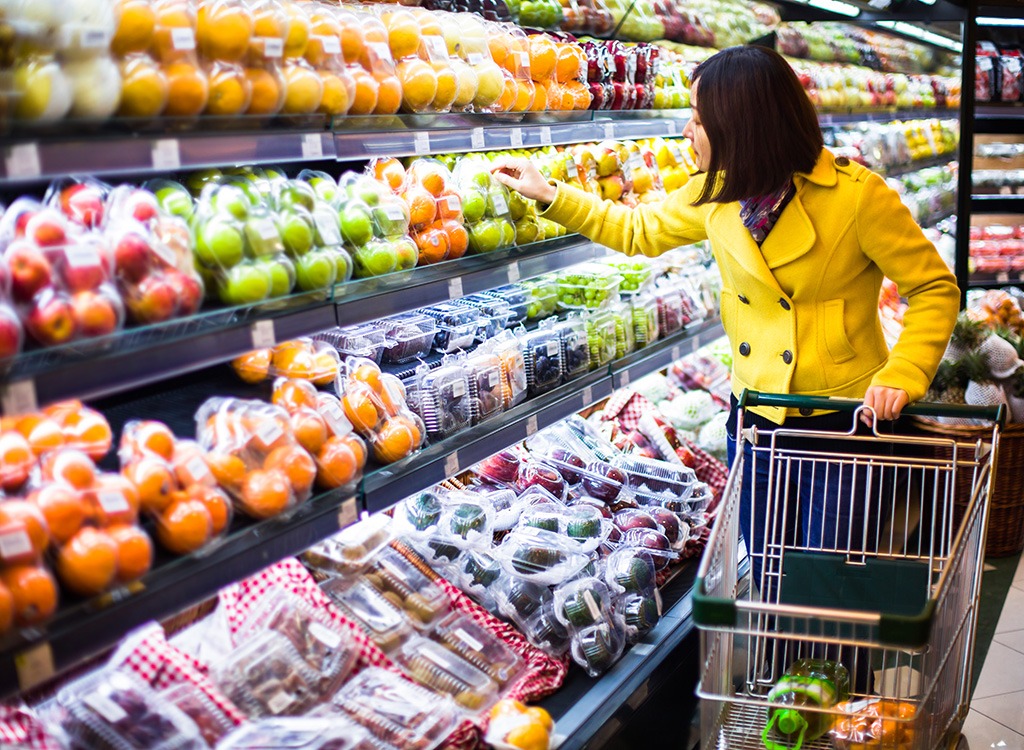
Sub-par conventional produce is bred to look waxy, glistening, and perfectly symmetrical, while prime fruits and vegetables are often irregularly shaped, with slight visual imperfections outside but a world of flavor waiting inside.
USE YOUR HANDS
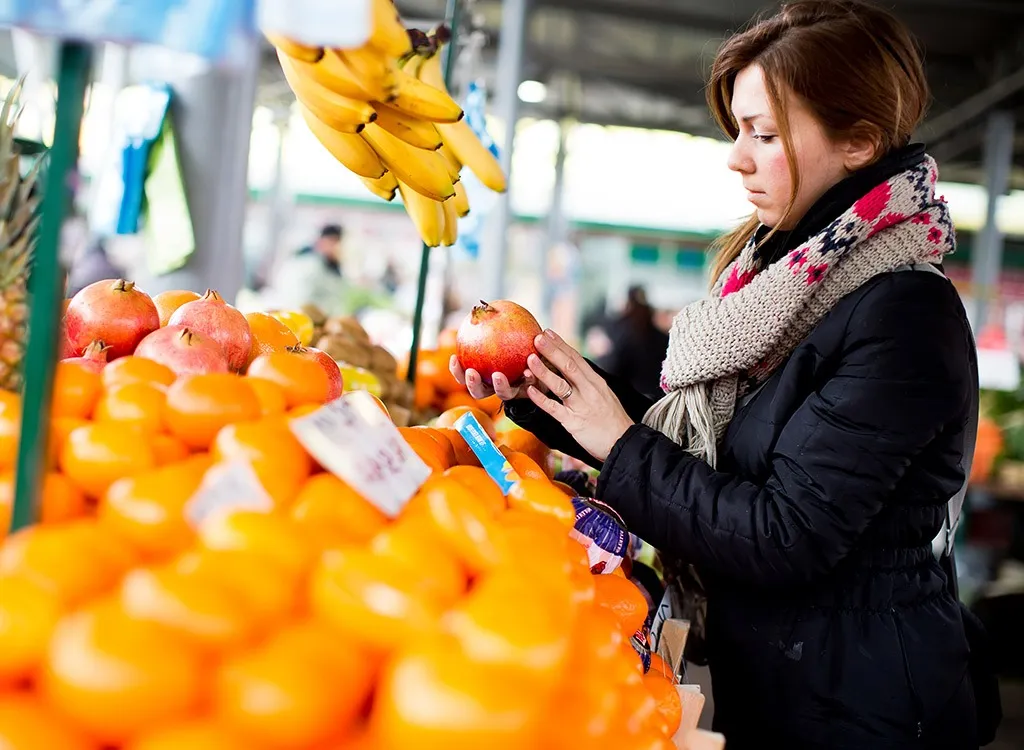
You can learn more about a fruit or vegetable from picking it up than you can from staring it down. Heavy, sturdy fruits and vegetables with taut skin and peels are telltale signs of freshness.
SHOP WITH THE SEASONS

In the Golden Age of the American supermarket, Chilean tomatoes and South African asparagus are an arm's length away when our soil is blanketed in snow. Sure, sometimes you just need a tomato, but there are three persuasive reasons to shop in season: it's cheaper, it's better, and it's better for you. So mark your calendar.
HOW TO SHOP THE MEAT & FISH COUNTERS
PLAY 20 QUESTIONS
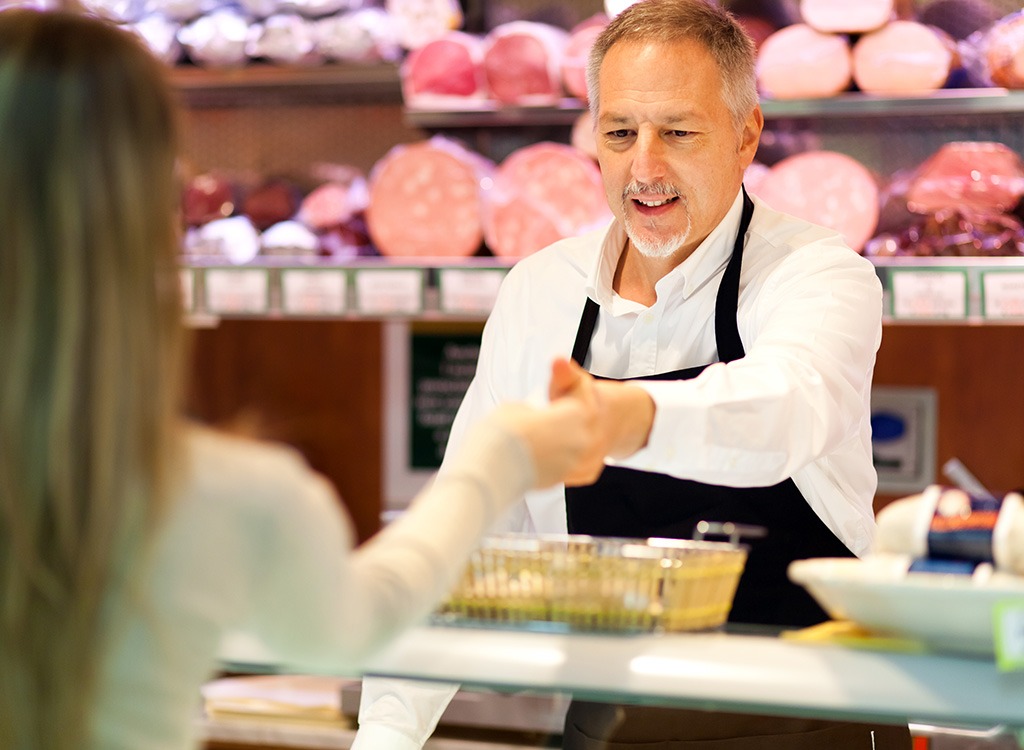
Nowhere does your ability to choose wisely matter more than at the fish and meat counters. End up with a chewy steak or a 3-day-old scrap of salmon and you've wasted a meal and a good chunk of change. Make friends with the butcher: Ask him about his favorite cuts of meat, the freshest protein in the case, his favorite Woody Allen films—whatever it takes for him to open up and share the goods on the mountains of meat he lords over day and night. Play your cards right and he'll save special steaks for you, dish out his favorite recipe for braised veal shanks, and generally help you navigate your way through one of the most critical—and confusing—sections of the supermarket. And if your butcher isn't the talkative type, or, worse yet, your supermarket has replaced the butcher with a shrink-wrap machine, well, then it's time to shop somewhere else.
WHEN GOING FISHING, THINK SMALL
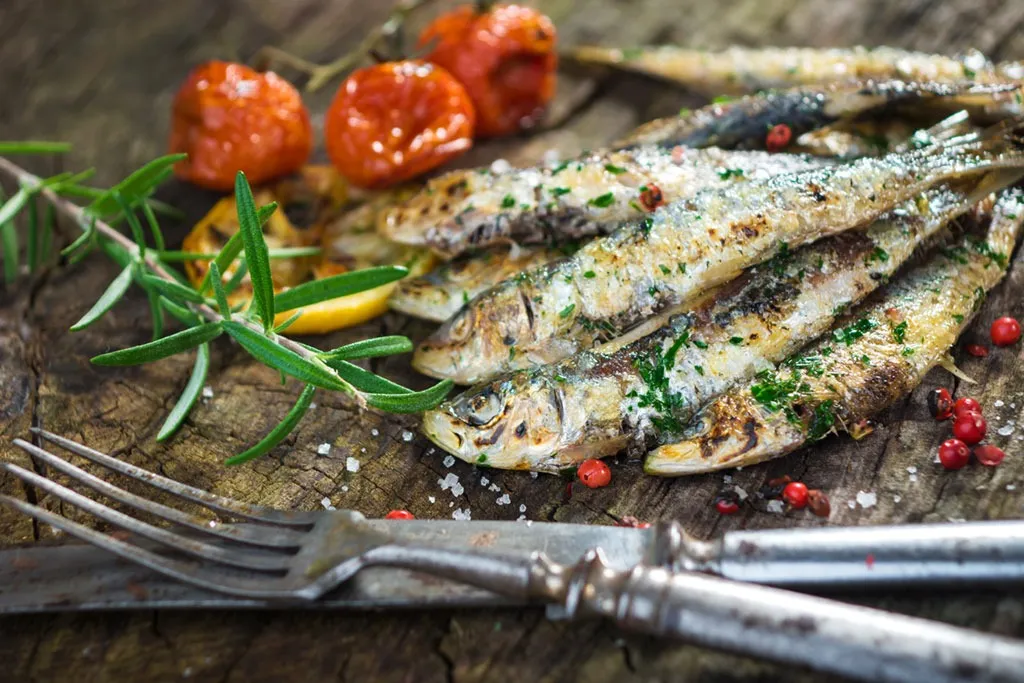
Fish build up stores of mercury and pesticides in their fat and muscle tissue. Then larger fish eat them, adding all of those contaminants to those already in their bodies. Then even larger fish eat those fish, and so on. The higher a fish is on the food chain, the more pesticides and other nasty nibbles it has stored in its tissues. Sardines, anchovies, and Atlantic mackerel will generally be lower on the contamination scale than the big predators like swordfish, shark, and tilefish.
PICK UP PROTEIN FOR BREAKFAST
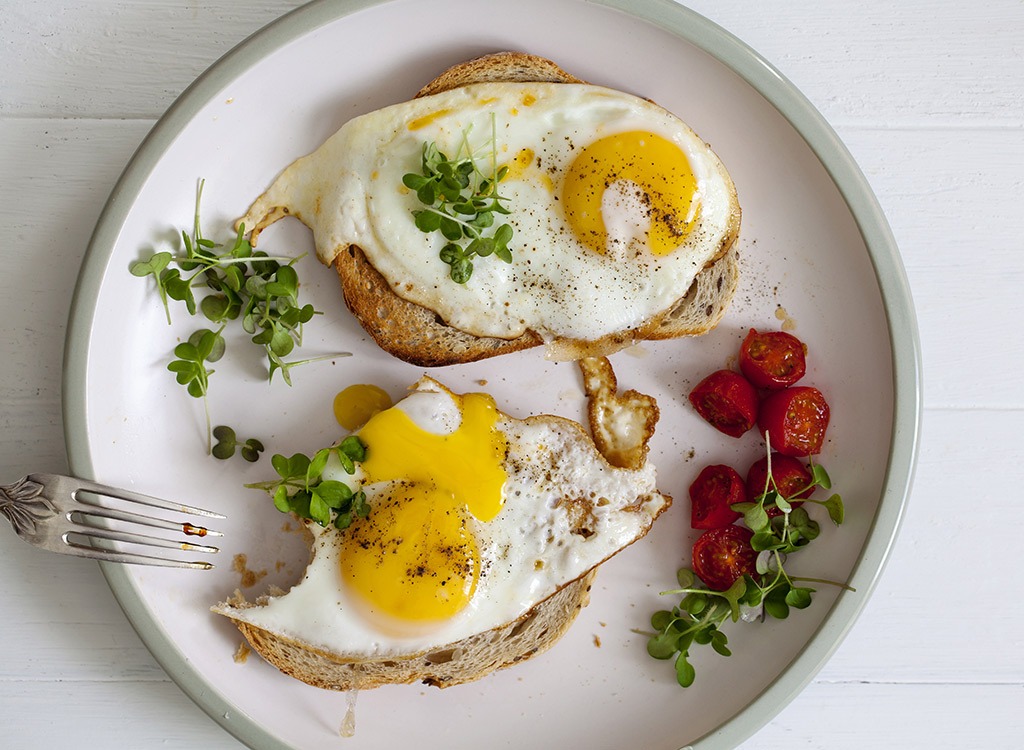
In a 2008 study, researchers at Virginia Commonwealth University found that people who regularly ate a protein- rich, 610-calorie breakfast lost significantly more weight in 8 months than those who consumed only 290 calories and a quarter of the protein. The big-breakfast eaters lost an average of 40 pounds and had an easier time sticking to their diets, even though both groups were prescribed the same number of daily calories. To help you shop, check out our guide to the Best Foods for a High-Protein Breakfast.
STOCK UP ON STEAK
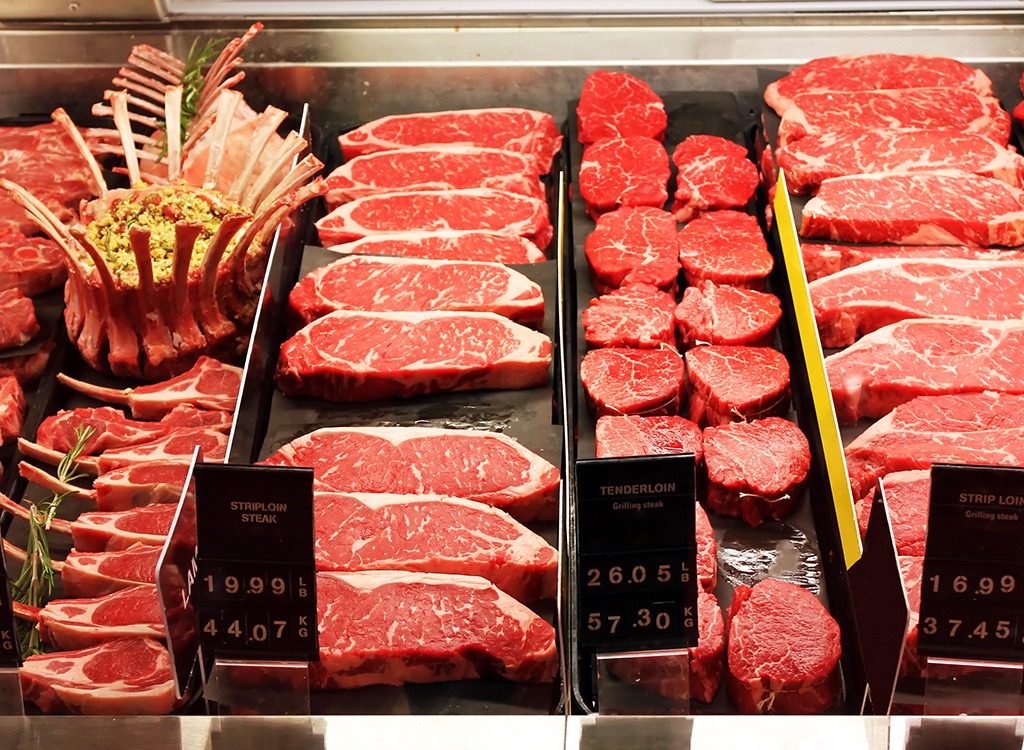
A British study found that high-protein foods trigger the release of a hormone that stifles hunger. If it's going to be a while before you eat again, go for the meat—it will tide you over longer than a salad will. So on your next trip to the supermarket, stock up.
GET IN TOUCH WITH YOUR WILD SIDE
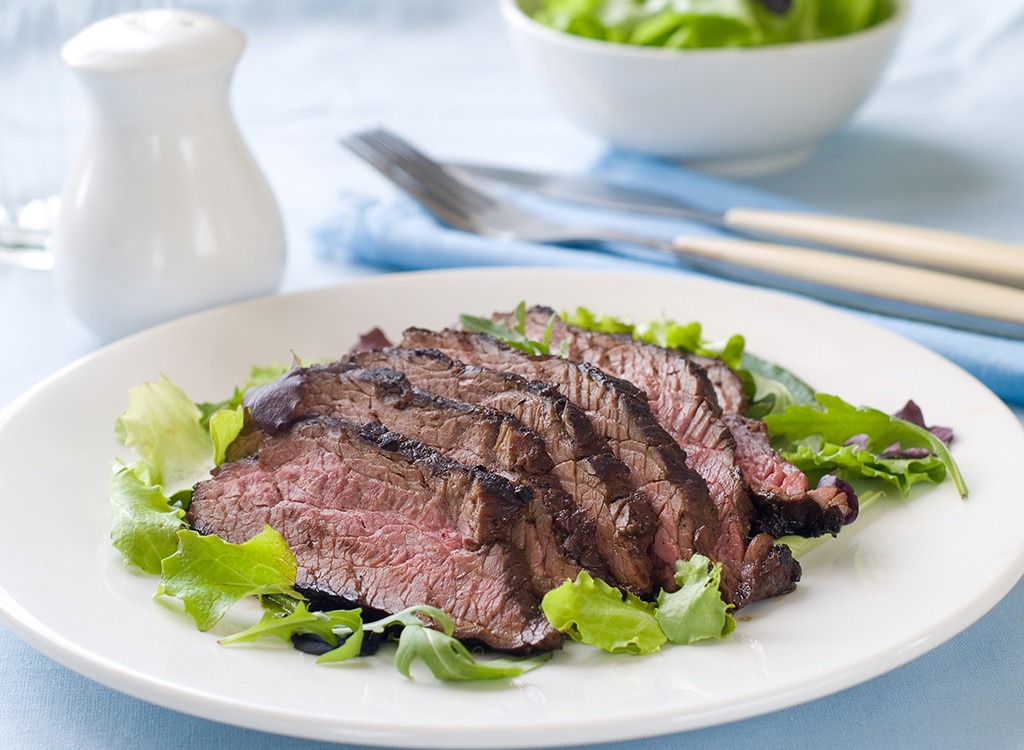
Researchers at the University of Wisconsin suggest that people who want to cut down on calories, saturated fat, and cholesterol—while still indulging their inner carnivores—might want to play games. No, wait, that's not it. They say people might want to prey on game. Ah, yes. Meats like ostrich, bison, venison, and elk typically contain as much protein and iron as beef or pork, but have less fat and fewer calories.
HOW TO SHOP THE FREEZER SECTION
ADD 8 PERCENT

To the food's caloric content, that is, when choosing frozen meals. Coming up with exact calorie counts for full dinners is trickier than averaging out what you'll get from a serving of a single food, like a cereal or a soda. And since packagers want to look as nutritionally appealing as possible, they're likely to err on the low side: When Tufts University researchers looked at 10 frozen supermarket meals, they found that the calorie counts reported by the food companies averaged 8 percent less than the researchers' nutritional analyses. Stay away from the 48 Worst Frozen Foods in America!
IF YOU'RE NOT EATING IT TOMORROW, BUY IT FROZEN
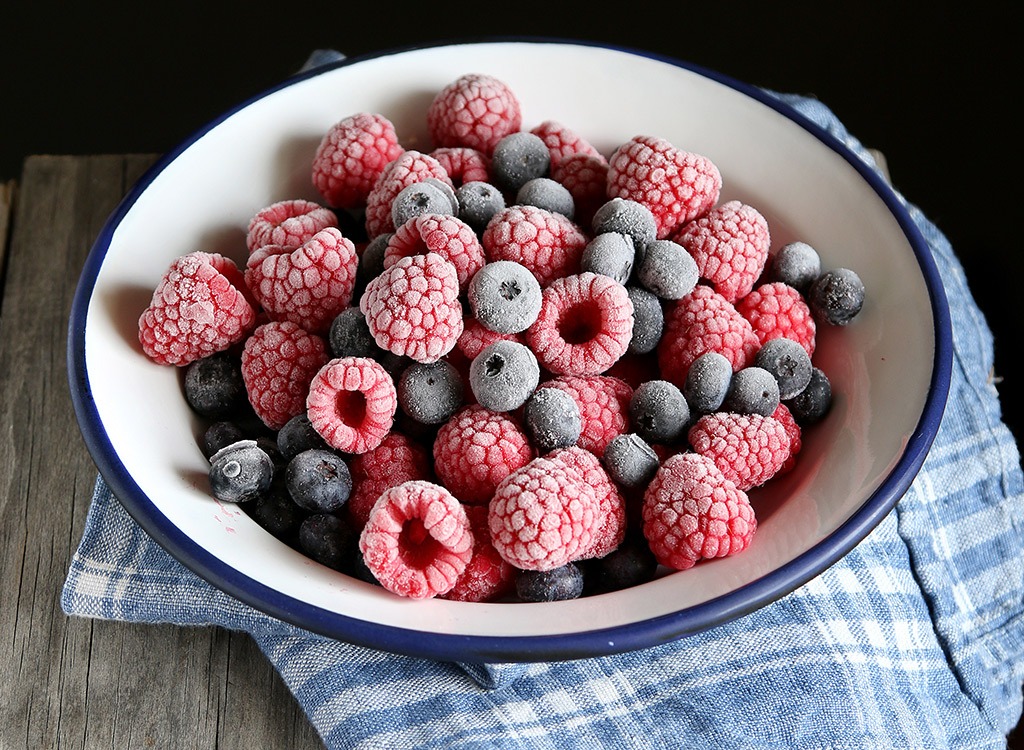
This is especially true of fruits, vegetables, and juices. One study found that green beans and spinach lose as much as 75 percent of their vitamin C after being stored in the fridge for a week. And at Arizona State University, an analysis found that ready-to-drink orange juice has significantly lower amounts of vitamin C than frozen juice—and that it loses almost all of its vitamin C within 4 weeks of opening the package. These are the Best Weight Loss Foods to Buy Frozen.
PLAY MIX AND MATCH WITH WHAT'S ON OFFER
Why choose between prepackaged meals when you can pick out everything you want to eat and have it all be ready at the same time? Maybe you like sweet peas, chicken cordon bleu, and garlic bread. If there's no complete dinner that meets your criteria, just buy all the ingredients separately and heat them up all at once. Buying a bunch of frozen ingredients will keep your palate entertained, and save you money in the long haul.
DON'T BURN YOURSELF
When scientists found the intact bodies of woolly mammoths frozen in the Siberian ice, they were astounded to discover that the flesh was still edible—no freezer burn here. Why? Because unlike your leftover T-bones, the mammoth meat was completely enclosed and protected from the air. When meat is exposed to air, even in the freezer, it allows the water molecules to sneak out of the steak like a deadbeat sneaking out on a restaurant tab. To keep your steaks tasty until 2525, remove the fresh meat from its package, wrap it snugly in plastic wrap, and then slip it into a freezer bag, squeezing out as much air as possible.
SKIP THE SODIUM
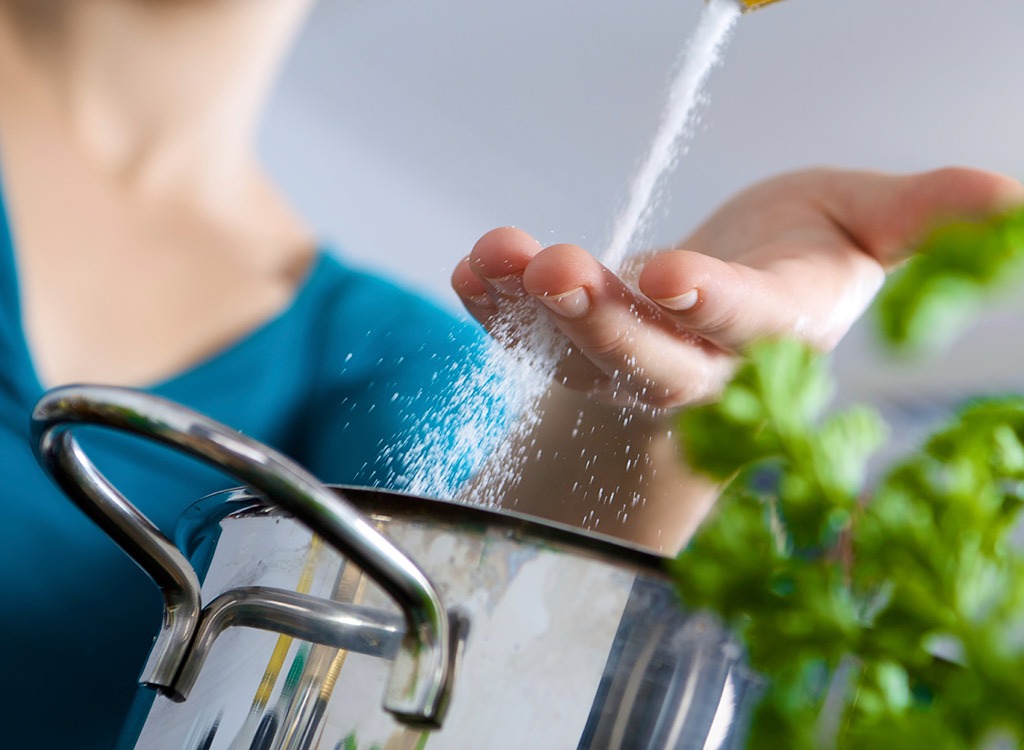
Sodium is a good preservative, so it should come as no surprise the freezer is the saltiest section in the supermarket. Read labels carefully to make sure you're not getting more salt than you would with fresh foods. And be sure to factor in the suspicious serving sizes used by frozen food manufacturers to make their products look healthier than they are—there's a good chance you'll be eating more than one serving worth of that pizza, that mac and cheese, or that pot pie.
STOCK UP TO SAVE UP
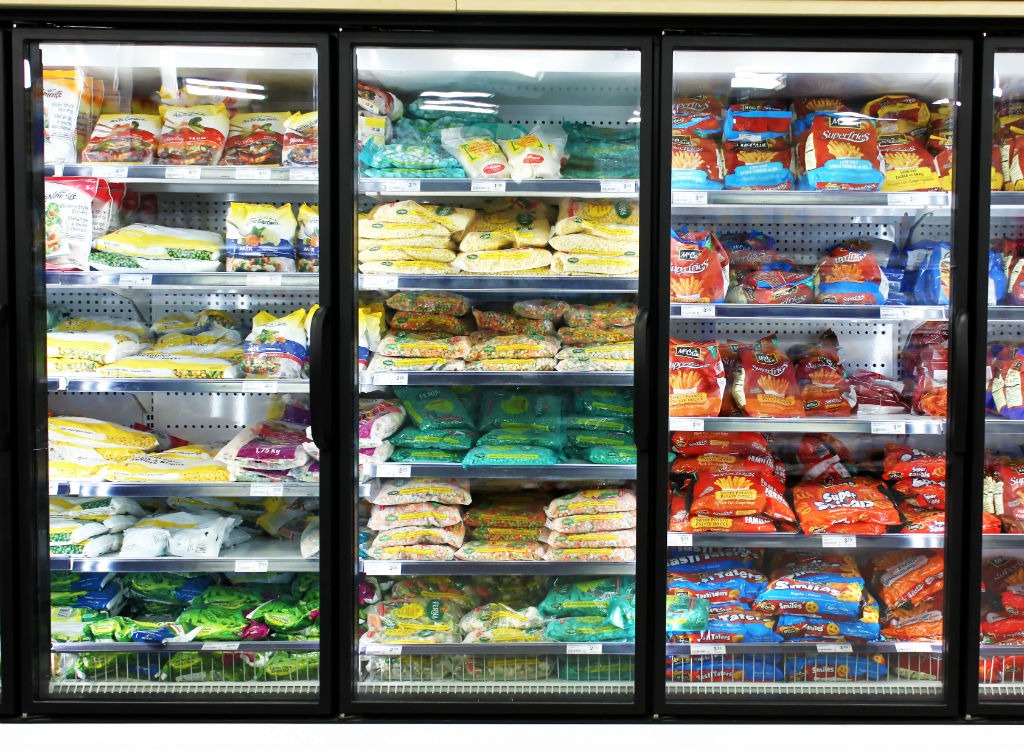
It takes more energy to keep air chilled than it does to keep solid food chilled. So the more you pack in your freezer, the cheaper it is to keep it running. Neat trick, huh?
